Cerebus (1985) #81-111 by Dave Sim & Gerhard
This batch of Cerebus comics are the issues collected as Church & State II; December 1985 to June 1988. Let’s see how it starts:
Ah, yeah: Cerebus is the Eastern Pope, but had been thrown into the Lower City (of Iest) by a Thrunk, a very big stone monster. And then meets up with the Roach, of course, while having a bad cold. You with me? Sure!
Also: Sim and Gerhard’s artwork is still reaching new heights.
I may be in the minority here, but I think there’s a kind of diminishing return on these Marvel parodies. This is about the verbiage of Secret Wars, and the blocks of recapping the Fleagle Bros are engaging in here is pretty much spot on, but… is it hilarious? Is it? Or is it just kinda slightly amusing?
It doesn’t help that everybody speaks in funny voices at the same time. And the Cebebud god a cod thing gets really annoying after a while.
Fan service.
Mardas lived in Athens until his death on 13 January 2017 at age 74 from pneumonia
I think Sim is hinting at these hangers-on being leeches on the creative lights, and I think he’s probably talking about himself being Lennon.
Finally Astoria sums up the central tenets of Kevillism!
I interpreted this as Michelle saying she was going to tell Cerebus all about the truth of things in the next issue… but that doesn’t happen, so she said all the had to say in this issue, I guess? It wasn’t particularly illuminating. Except showing Weisshaupt to be even less of a political genius than we had reason to believe. (But at this point, it had been shown pretty conclusively that he wasn’t that smart anyway, so…)
But Sim is so good at this! Reading these scenes, it’s really effective: You really feel like you’re getting vitally interesting information conveyed (and in an amusing way, too), but then you start to think about it, and…
The pics on the back covers are uniformly horrible, and I wonder why. I mean, snapping shots isn’t that difficult.
We’re getting a foreshadowing of the High Society paperback: Sim really wants more money, but isn’t quite sure about how to make that happen. DC had (at this time) allegedly offered Sim a lot of money to buy Cerebus, and that had apparently started Sim thinking…
Oh, yeah, I had forgotten that Church & State was divided into “books” (of uncertain lengths). Sim had planned out the entire storyline at this point, but not how many issues this would result in.
I think this is a parody of Dark Knight Returns? And also… even having read this a bunch of times, I’m not sure why Cerebus starts running after the Roach?
And also: I remember being really frustrated (as a teenager, reading this for the first time) with the lack of details about what the layout of Iest was. I mean, there’s the Lower City (seen here) and the Upper City (which is growing into a tower), or is it?
The confusion stems from pages like this, where Cerebus is crawling up to the Upper City (probably), but we see panels like this where there’s apparently a Black Tower behind him? But that is supposed to be Cerebus thinking about the Tower, I guess.
On the one hand, this confusion fits the frantic action of these scenes. On the other hand, I think… it’s perhaps not a confusion that was intended? It’s a thing in Cerebus generally: It’s seldom conveyed where things are in relation to each other.
Sim says that he’s fed up with letter writers and nasty people having opinions about Cerebus.
But he produces these awesome promotional posters. I mean, what comic shop wouldn’t want to put these on the walls and watch the issues of Cerebus fly off the shelves?
I kinda think these years are the Imperial Phase of Cerebus. Gerhard had come aboard, so Sim didn’t have to draw so much stuff, and every issue of Cerebus seemed to sell more than the previous one (peaking at 33K, though), and Cerebus was critically well-regarded and Sim was doing all the drugs and having fun (I’m just going off the pics here), and Sim was starting to head an entire movement of self publishers…
However, 86-87 was the black and white boom (and bust), so all black and white comics were increasing in sale at this point. And Sim’s deranged politics hadn’t really been made manifest yet, and both the imploding sales and growing unease (and disinterest) in Cerebus happens about… four years from now? I think? We’ll see later in this blog series, I guess.
So: The Imperial Phase.
Because Cerebus is really cooking in these sequences. It seems like everything is finally happening, and everything is going to connect and make some kind of deep, satisfying sense. In addition to being exciting on a scene to scene basis, of course.
Sim expresses appreciation for the work editors do.
Sim’s Marxian dialogue is so effortlessly hilarious.
Sim had found out how to get rich quick: He printed up 6K copies of High Society, and sold them via mail order at $20 a pop, giving him a cool $100K in profits (apparently). Good for him. The problem was, though, that this pissed off comics retailers and distributors, because he didn’t offer the books to them. Sim here tells them to go fuck themselves. (I’m paraphrasing loosely.)
The reasoning here is… it’s… he spends a lot of time speculating that a large part of his readership is people working in comics shops, so they’d been getting Cerebus at a discount anyway, so… er… something.
Cerebus Jam was planned as a bi-monthly companion series, but it took more than a year to get the first issue done, so Sim here says he’s just going to run the pieces planned for #2 in Cerebus. This seems to be the only piece though, and I guess it’s about DC editor Julie Schwartz, who was notorious for sexually harassing any women in his path?
Anyway, Sim warns off all women in the comics industry that harassment is endemic, especially at conventions and the like. I don’t think that was talked about a lot at the time… it just took (counts on fingers) 30 more years for that to get some general attention.
The four page story (which melds Doran’s and Sim’s (and Gerhard’s I guess) artwork pretty flawlessly) is a even more vague on particulars than the introduction.
Cerebus shows consideration.
I talked about this issue in the blog post about Mister X, but it’s a pretty major plot element here. I mean, Cerebus has gotten an apparently mystical, possibly holy golden sphere, but Seth and Bill Marks inadvertently distract him so much that the sphere turns into gold coins again. It’s brilliant storytelling, because it’s so… so… annoying!
Comics shops have been buying copies anyway, and are selling them at the proper mark-up… which makes me wonder whether Sim could just have framed this differently and avoided the controversy. I mean: Sell the book both through the distributors and also directly to people. And taking $20 in either case? (I.e., not giving volume discounts to anybody.) Comics publishers rarely do that, though, and it might have pissed off as many retailers, anyway.
cat yronwode, the Eclipse editor, writes in to say that she pissed off at Sim’s anti-editor stance.
And then Cerebus rapes Astoria.
Now, Cerebus had been killing babies and old people en masse in previous issues, but the framing had been comedic. This is something qualitatively different, and I wonder whether this was what started souring people to Cerebus. I mean, it’s one thing to read a series about a not-very-smart, selfish, somewhat murderous barbarian trying to conquer most of the world… all fun stuff!… but having the protagonist be a rapist, too, makes it more “hm”.
Sim regales us with stories about how hot he is, seemingly without any sense of this being ridiculous.
Sim announces that he’ll allow distributors to buy the collections if they place sufficiently high orders. Perhaps.
I’ve kvetched in previous blog posts about how unconvincing some of the machinations in Cerebus are. I mean, here we have Astoria, who’s supposed to be very smart indeed, ascribing Cerebus’ actions as having some kind of deeper meanings. But she knows better than anybody else that he’s about as smart as lichen. So why?
Because Sim couldn’t come up with anything smarter himself.
Sim announces that he’s going to stop smoking pot every day, all day long.
I think the trial scene is masterful. It seems like as if everything is coming together! It all fits! It all connects! It’s wonderful.
I want to go to Hawaii, too!
Apparently some (?) readers didn’t think that Cerebus raped Astoria, but Sim is pretty adamant.
An editor explains to Colleen Doran about human anatomy.
The thing about that masterful revelation in the trial scene, though… is that it all hinges on Weisshaupt being totally prescient. I mean, first he arranged for the Countess to give Cerebus the means to blow up Thrunk. Then he somehow arranged for a golden sphere to appear during the trial to allow Cerebus to ascend (and become Tarim, Weisshaupt assumed). It’s super lazy plotting, having Weisshaupt being the not-quite-deus in the machina, and it doesn’t really make that much sense if you stop to think about it.
If you don’t, though, these are super thrilling issues, and re-reading them now was pure delight: They’re propulsive and exciting.
Trina Robbins (and others) take up the invitation from Sim to write in and express their opinions on Astoria’s rape.
If you wondered what kinds of things Sim was thinking about now that he’s stopped being stoned all day…
Perhaps he should have gone back to smoking?
Just when things were barrelling along most wonderfully, we get a cross-over issue with Bob Burden’s Flaming Carrot. It feels pretty irrelevant.
A very strange person writes in with an apparent death threat (he probably thought he was being kinda funny?) because Sim hadn’t signed several cases of Cerebus comics at a convention.
He writes in back again and justifies his original letter… because he was… angry.
If Sim was dealing with this kind of shit on a daily basis it clarifies his anger directed at fans.
Sim decided against offering the reprint collections to the distributors, and Diamond retaliates with an extraordinary letter of extortion: If Sim doesn’t change his mind, Diamond is going to tank Puma Blues (also published by Sim). It’s pretty despicable.
Meanwhile, Cerebus really did ascend, but instead of becoming Tarim, he meets a guy on the moon who apparently explains everything… but with a kinda anti-Tarim slant. It turns out (ten years later in Cerebus) that most of what he’s saying are lies, but it’s not clear whether Sim meant for this to be the truth at the time. My guess is that Sim changed his mind after going off all the drugs and finding religion. (I guess he didn’t check the look on his junkie face (see editorial up there).)
Meanwhile, all the text pages in these issues are taken up with the battle between Sim and the distributors.
Sim says he will never back down. (Spoilers: He backs down a few months later.)
Of course, Cerebus is so dim that he just wanders off in the middle of that guy explaining the secrets to how Suentus Po conquered … er… stuff. (It didn’t seem very interesting to me, either, so I sympathise with Cerebus.)
The guy on the moon explains that The Big Bang was Tarim (the void) raping Terim (the light). (I think.)
And also that there’s something mysterious meaning involved in going to the moon. But we didn’t take the hint the universe was trying to send us!
I think you can see Sim’s later “there are signs everywhere” weirdness already at this point.
And then this sixtyish issue sequence ends… pretty much like Sim had ended all the stories: Cerebus is off somewhere where the action isn’t. The end! (The invasion in issue #19, the ending to High Society, many of the earlier one-issue stories.)
Since Sim uses this ending so often, it’s either because he’s really fond of it… or because he writes himself into corners and has to hit the reset button.
I think it works OK here, but it is a bit of a disappointment.
And of course: Pages and pages of distributors writing about what a meanie Sim is.
I think the second part of Church and State is probably the most accomplished Cerebus sequence, but it’s hard to love. It doesn’t have a lot of structure, and part one is even messier.
TP writes in The Comics Journal #120, page 9:
Diamond Comics Distributors, one of
the nation’s largest comics distributors,
has notified Aardvark One Interna-
tional publisher Dave Sim that it will
no longer distribute the comic Puma
Blues as a response to Sim’s decision
to not offer his graphic novel High
Society to distributors. In a letter to
Sim, Diamond’s National Account
Represenative Bill Schanes said Dia-
mond felt “betrayed” and “penalized
for the unbusinesslike behavior and
practices of others” in not being able
to carry the second printing of High
Society. “If it is your intention to pick
and choose which products you want
distributors to carry, it should be our
privilege to choose what we wish to
distribute. Therefore, it is our feeling
we should no longer carry and promote
puma Blues.”
Sim told the Journal, he believes that
Diamond’s dropping of puma Blues is
an act of “blackmail” indicative of
what he sees as a larger “anti-creators
stance” on the part of comic
distributors.
When High Society. a $25.00 collec-
tion of the popular black-and-white
comic Cerebus, was first printed in
mid-1986 Sim sold it exclusively by
mail order Circumventing the usual
distribution channels enabled him to
retain an additional 504) % of the pm-
fits that the normal,distributors• and
retailers’ discount usually consumes.
That added income, Sim wrote in
CerebLS #87, ensures ‘the survival and
success of creative liberty” by giving
him a stable capital base. Sim has
subsequently published Other
graphic novels, Cerebus ($22) and
Church and State (S25) and sold both
exclusively by mail order. A 25% dis-
count is offered for orders in quantity:
for 18 copies of Cerebus or 16
THE COMICS JOURNAL #120, March 1988
copies Of Church and State or High
Society.
Schanes contends, however, that dis-
tributors are being treated unfairly. He
asserted that after years of supporting
the low profit products Of
Aardvark One International and its
sister company Aardvark-Vanaheim,
distributors and retailers deserve to
also get a percentage of the larger pro-
fits that High Society will make.
Schanes also quoted in his letter the
praise of Aardvark-Vanaheim’s Ad-
ministrator Karen McKiel who told
him Diamond “was one of your ‘best
distributors and the most financially
Strong based On years of prompt
payments.”‘
When High Society went into a se-
cond printing in the late summer of
1987 Sim agreed to let distributors
carry it on the condition that they could
solicit high orders. The nation’s largest
distributor, Capital City, neglected to
solicit for the book, however, because
they believed, due to a miscommunica-
tion, it wouldn’t be available to them.
Without an order from Capital City
Aardvark-Vanaheim still received
orders for 4 copies. However, on
October 9 Sim sent a letter to
distributors canceling High Society’s
direct distribution “Because of [low]
advance orders.”
Gary Groth writes in The Comics Journal #121, page 5:
Cerebus’s Dave Sim has declared war on two
direct-sales distributors, Bud Plant and
Diamond. As usual, it’s being played out as a
Creators vs. The Oppressors drama, which is
not a little misleading. But when Sim puts Bud
Plant On an ‘ ‘anti-c•reator” blacklist, he’s for-
saking any claim to being just or even
reasonable, and his use of the tactics and ter-
minology of McCarthyism is disconcerting to
say the least.[…]
But, in what I can only see as an attempt to
punish Plant for returning the books in the first
place, Sim now refuses to ship Aardvark-
Vanaheim books to Plant’s Denver warehouse,
shipping them instead to Grass Valley, Cali-
fornia, whence they have to be shipped by Plant
to Denver and even further to St. Louis. This
smacks Of pure vindictiveness since it helps no
one, hurts both Sim and Plant (not to mention
the creators of the books), Costs money, and
serves no useful purpose.Next, Sim is putting Plant on an anti-creator
list to be published in Cerebus. This is not
merely vindictive but downright unjust. Of all
the distributors in the direct-sales market, Bud
Plant has probably been the most resolute in his
support for creators whose work he admires. He
is probably the distributor most knowledgeable
about comics and most respectful of the good
work being done in the medium.
Somebody writes in The Comics Journal #124, page 18:
Dave Sim hosted a “summit con-
ference” with six other comics profes-
sionals who self-publish or are con-
sidering self-publishing their ‘*Ork,
from June 28 to June 30 at L’Hotel in
Toronto, Canada.
Attending the conference were Sim,
the creator of Cerebus and publisher
of Aardvark-Vanaheim and Aardvark
One International; Taboo editors
Stephen Bissette and John Totleben;
Puma Blues creators Stephen Murphy
and Michael Zulli; and Teenage Mu-
rant Ninja Turtles creators and Mirage
Studios publishers Kevin Eastman and
Peter Laird. Previously announced
guests who did not attend included
Frank Miller, Bill Sienkiewicz, Alan
Moore, Dave Gibbons, Gerhard, and
Bob Burden.
The meeting originated as an
outgrowth of Sim’s dispute with Dia-
mond Distributors over Sim’s refusal
to sell the Cerebus High Society
graphic novel and Diamond’s threat-
ened retaliation of refusing to carry
Puma Blues. Sim announced the
meeting at the Capital City Sales con-
ference in May [See ‘ ‘Newswatch,’•
Journal #120-123].
According to a Mirage Studios press
release, much of the discussion at the
meeting revolved around the drafting
of a promised ‘ ‘Creative Manifesto” for
self-publishing comics creators. The
first draft of this document is to be
released in late July.
Somebody writes in The Comics Journal #118, page 53:
There’s still a zany pinball sensibil-
ity to Sim’s work; he’ll give you taut,
exquisitely-written exchanges between
his power brokers, and then, when the
tension is at its zenith, when an arch
of an eyebrow is like a baseball bat (to
the skull, he’ll open the floodgate for
his parodi characters, and bury you in
the broadest farce possible.
Kim Thompson interviews Sim in The Comics Journal #184, page 92:
SPURGEON: I get a sense you weren’t as interested in the
inner workings of the Church as you were in the nuts and
bolts offhe politics. Except maybefor Bishop Powers, you
don ‘t get a notion Of any of the players there.
SIM: My observations lead me to the conclusion that the
nature of faith is based, usually, on 25th generation stories,
car,’ed in stone, and the nature of the give-and-take of
politics like the two opposition parties. You’ ve got God and
the Devil when you move over into what really constitutes
the bedrock of faith. The adversarial idea behind faith — is
that necessary? In Cerebus I tried to get across that the
religion that I was dealing with , the primary religion, was not
so much concerned with the idea of God and the Devil. There
really is no Satan in the context of any of the writings that
I’ve done, apart from the peculiar splinter faction that
Cerebus was a part of when he was growing up which I threw
into the Jupiter sequence at the beginning of Minds. That in
place ofa God vs. Devil, it was more of a “Who’s going to
win, the men or the women?” Extrapolating Goddess wor-
ship and the primarily B)litical, far less religious Kevillism
as opposition to that, satisfied me that I had enough large
scale tension that was interesti ng to address to me. Certainly
far more interesting than trying to bring my own interpreta-
tion of “Is there a devil? Do we wrestle God and the devil
inside of us?” which is the sort of thing that has informed
Norman Mailer’s work from way back when. That just
became interesting as another dichotomy. I did want to
make up a civilization. As much as I wanted to talk about,
“Well, here’s North America. Here who’s I am. Here’s the
context in which I find myself,” I did also want to create a
world and make it plausible.
This blog post is part of the Renegades and Aardvarks series.
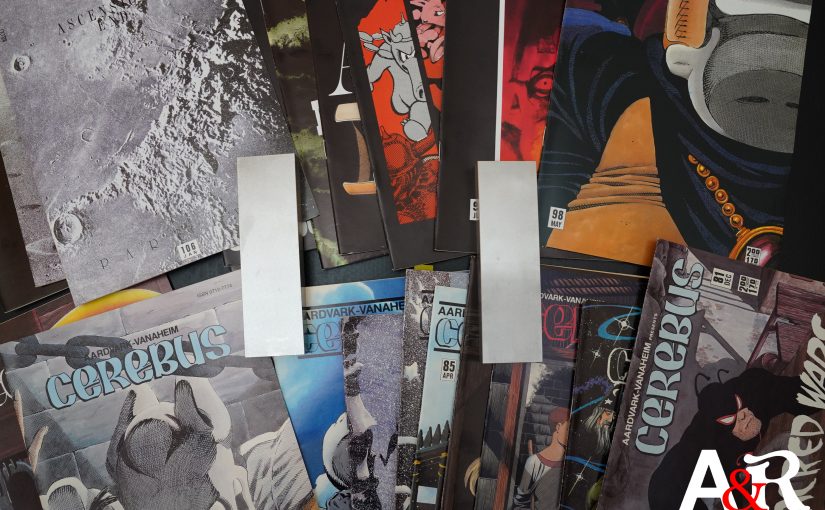
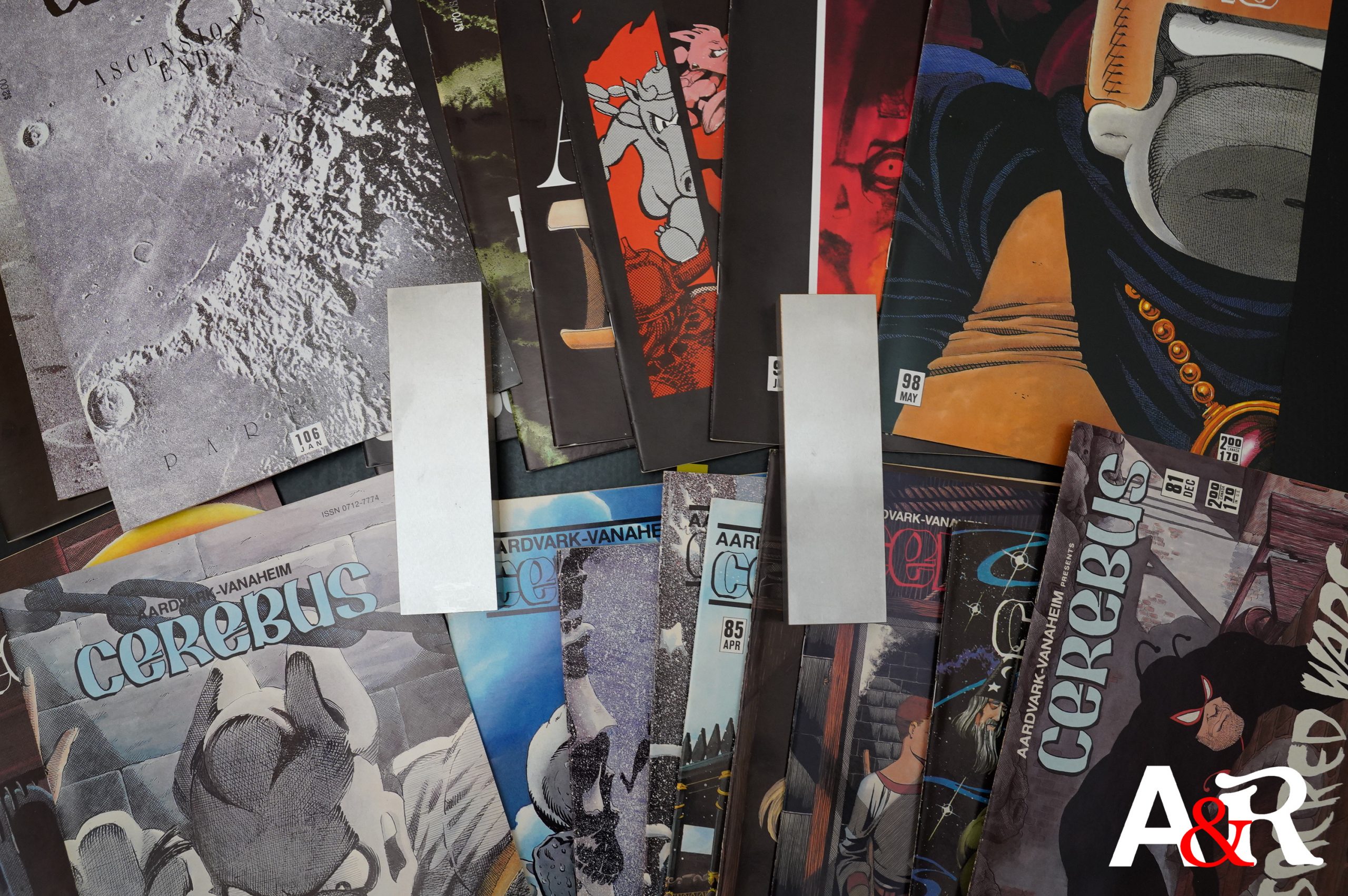
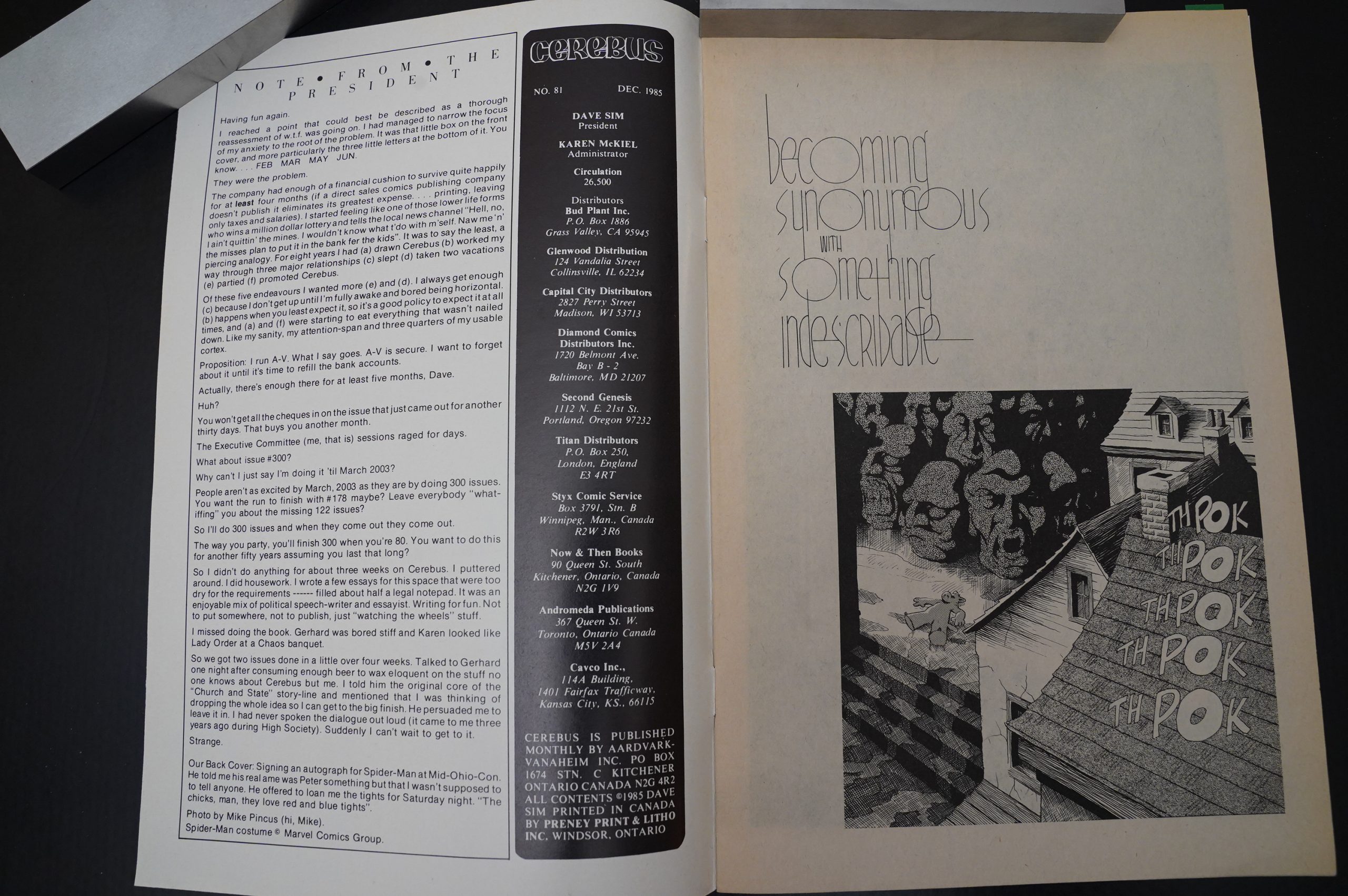
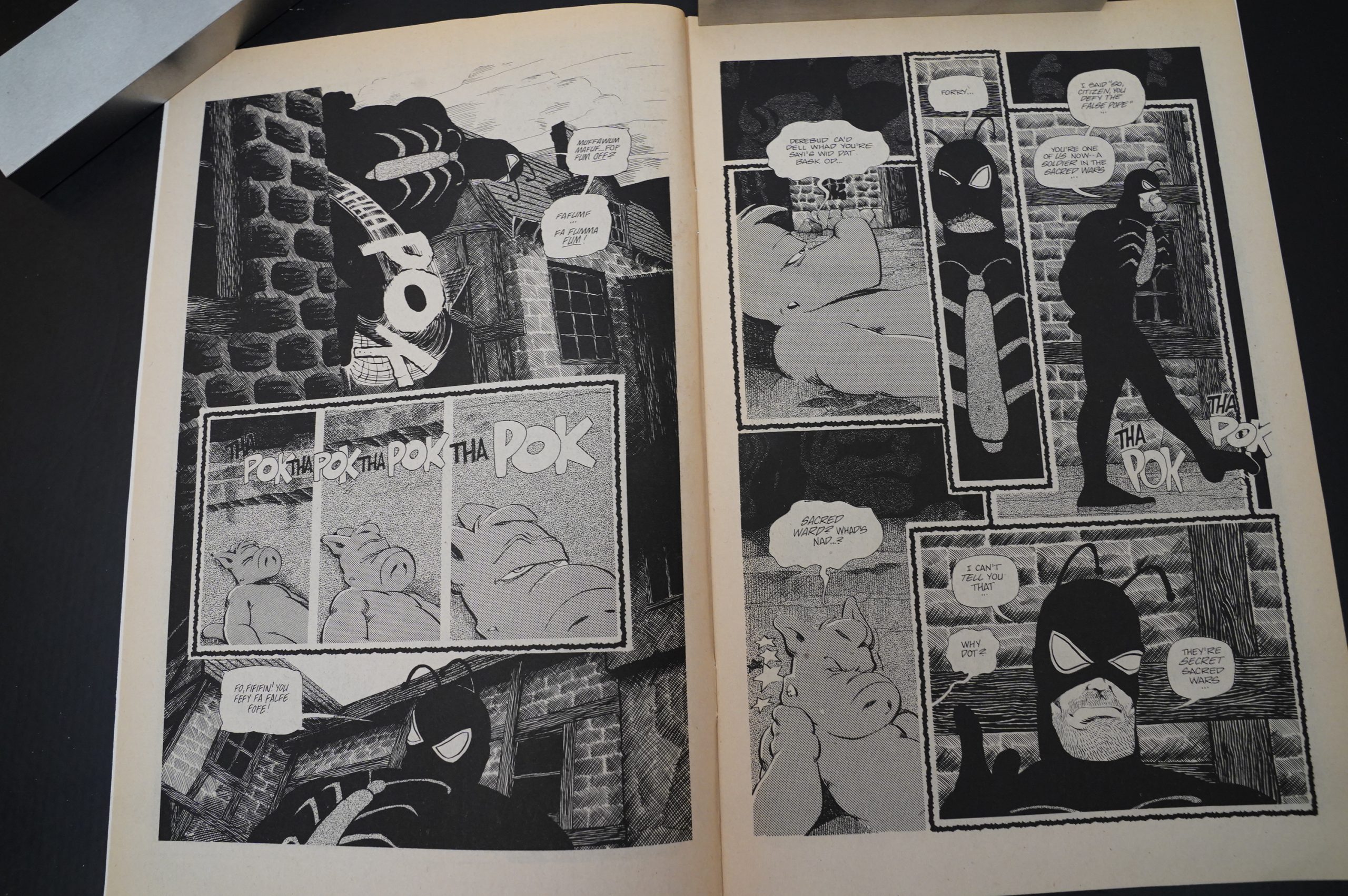
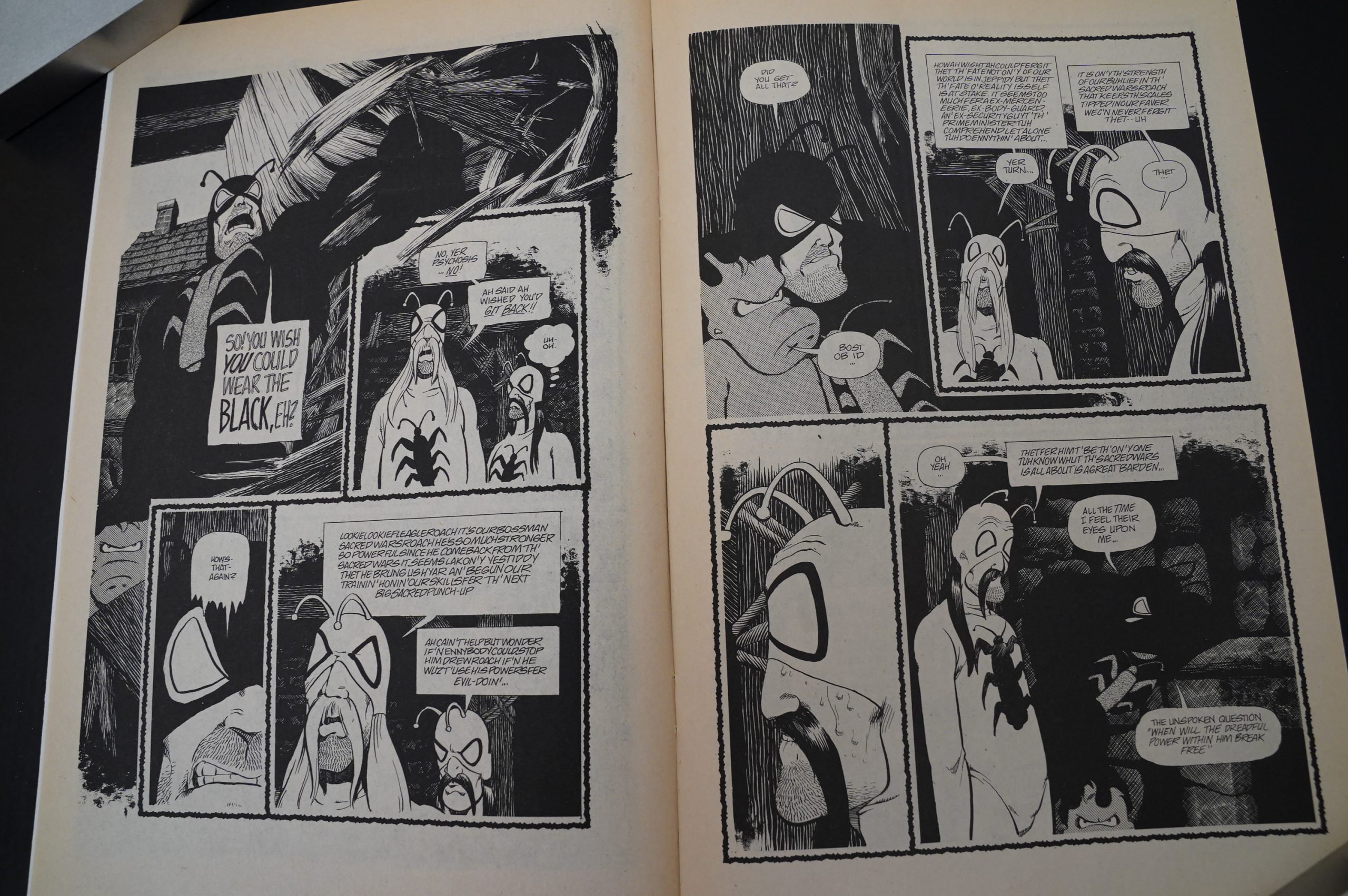
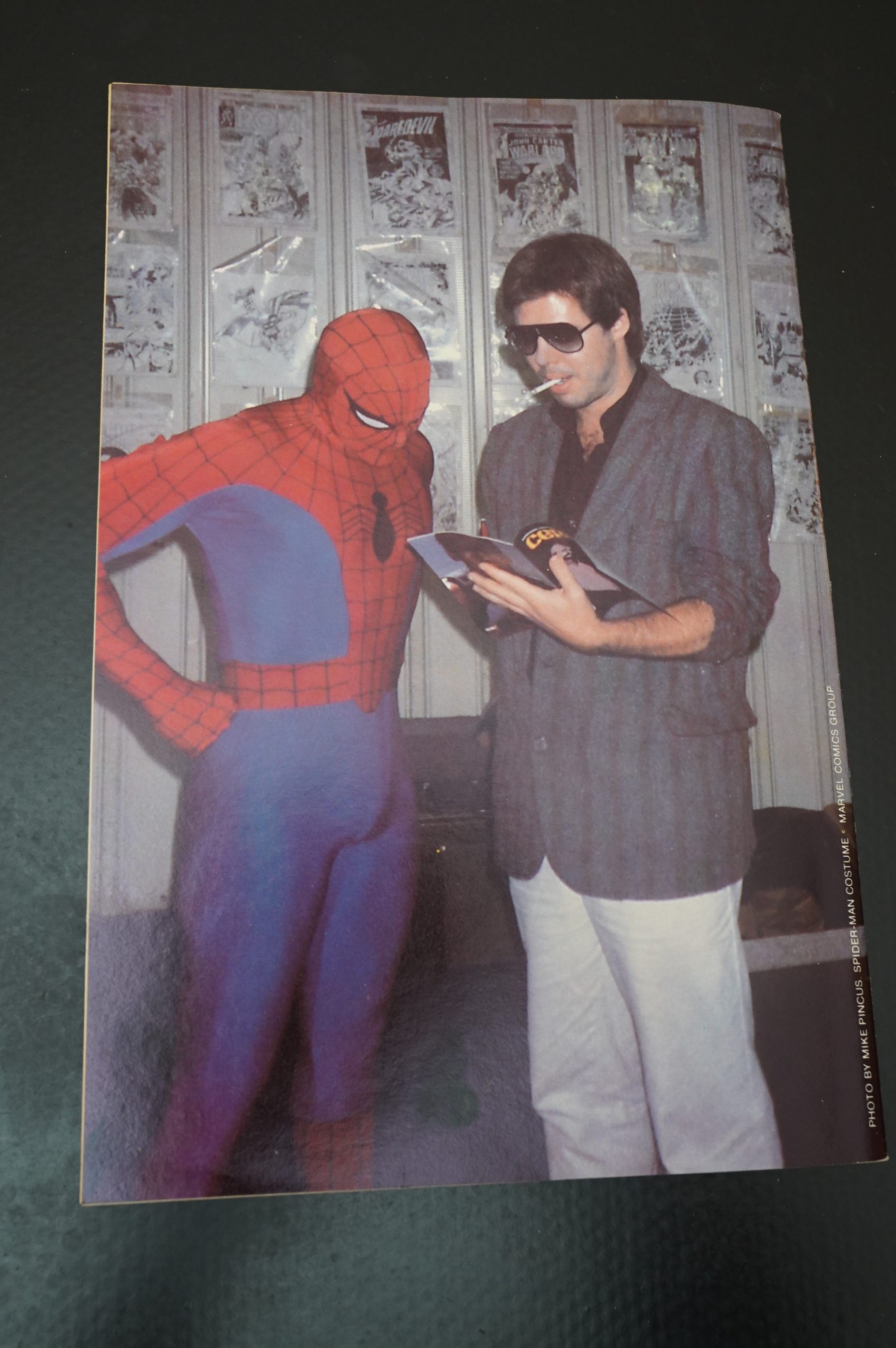
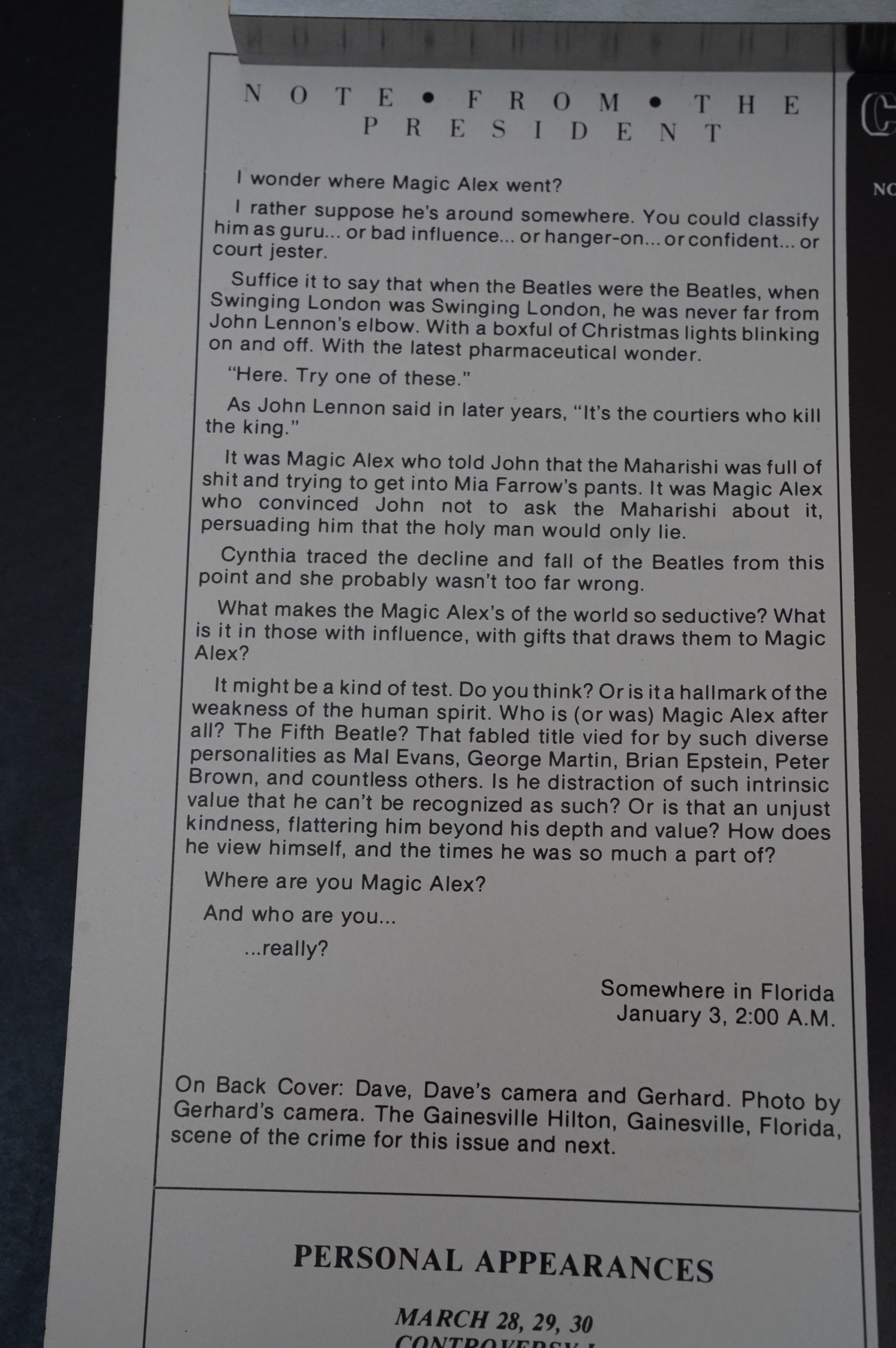
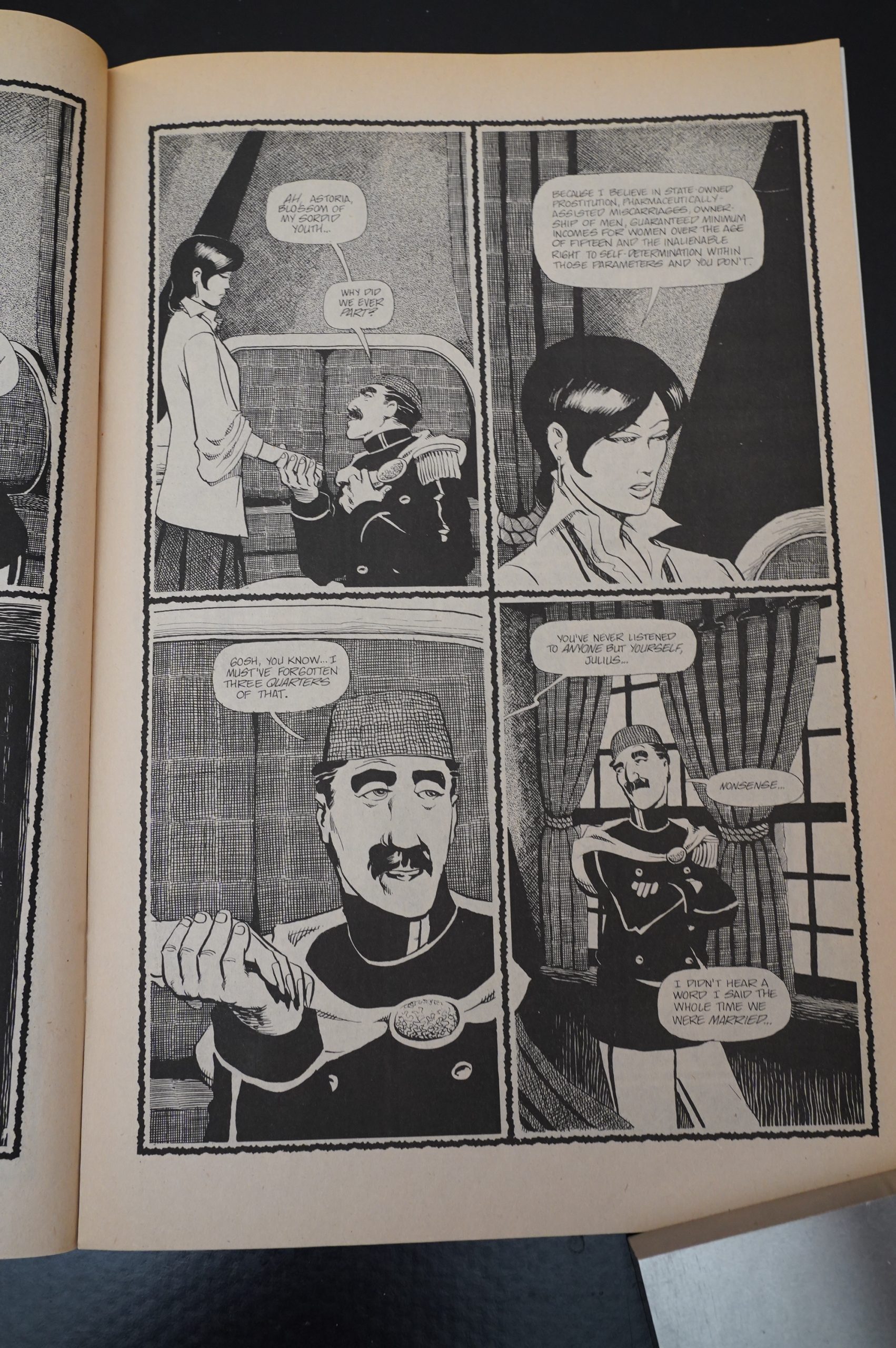
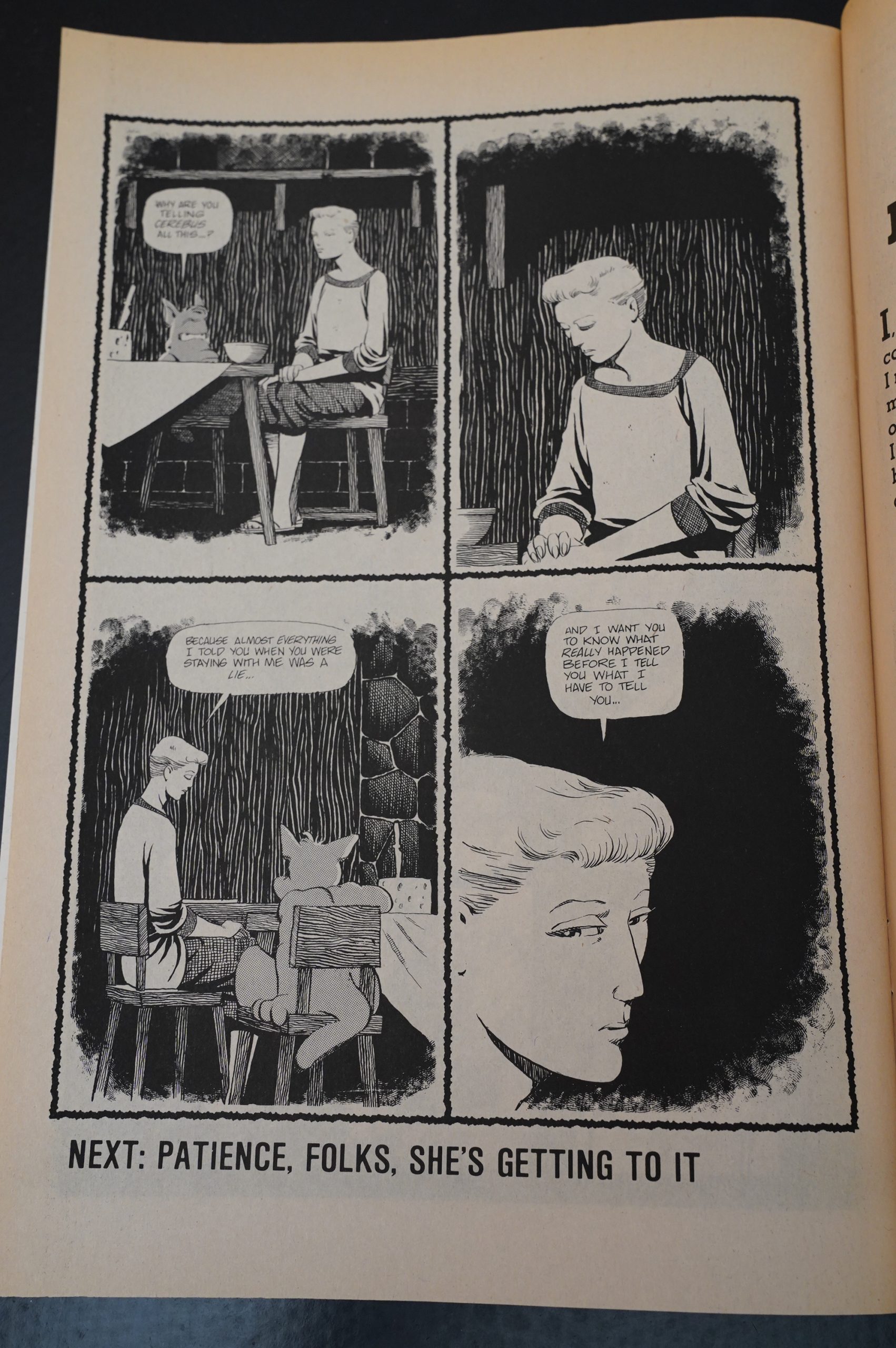
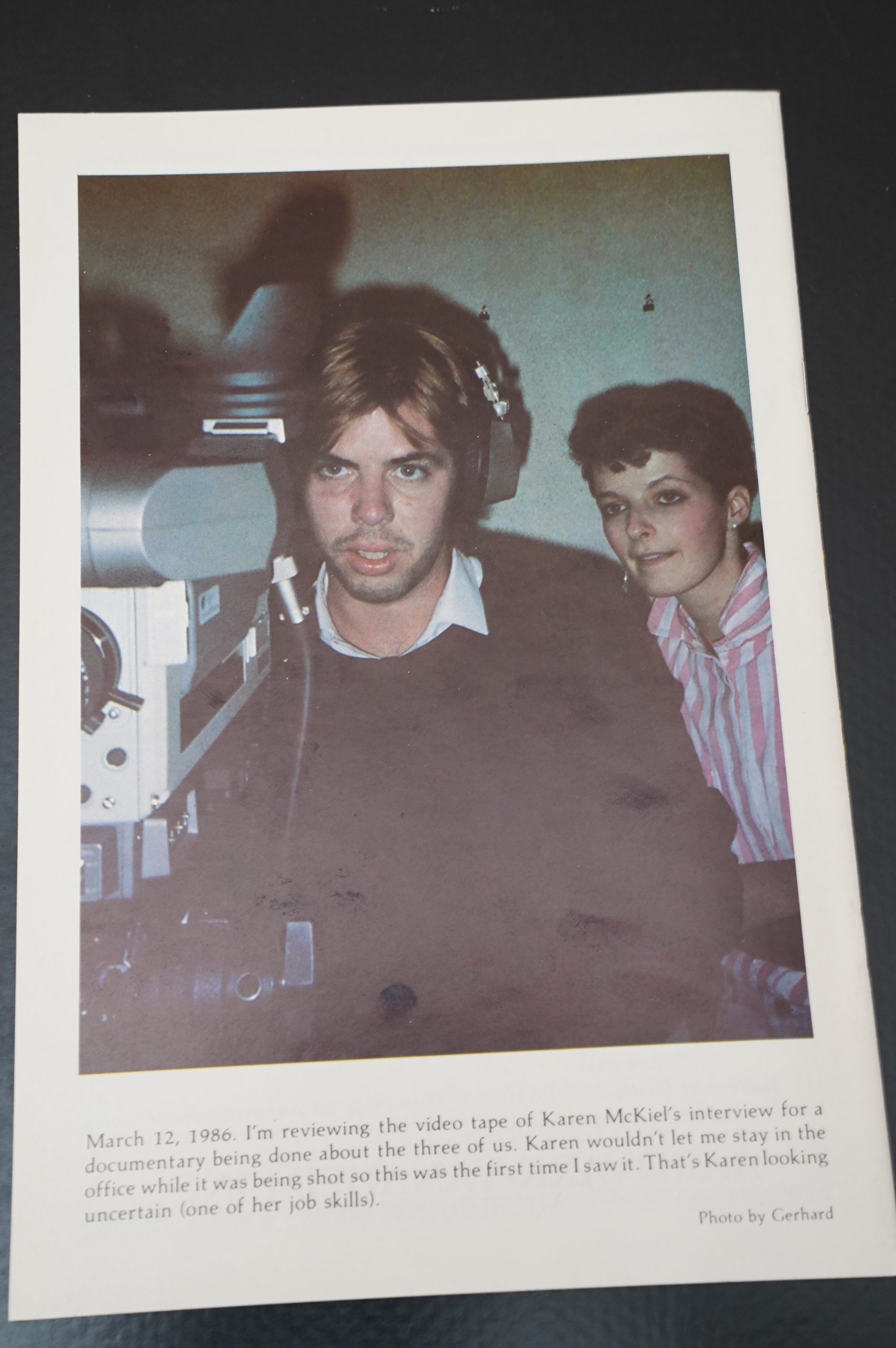
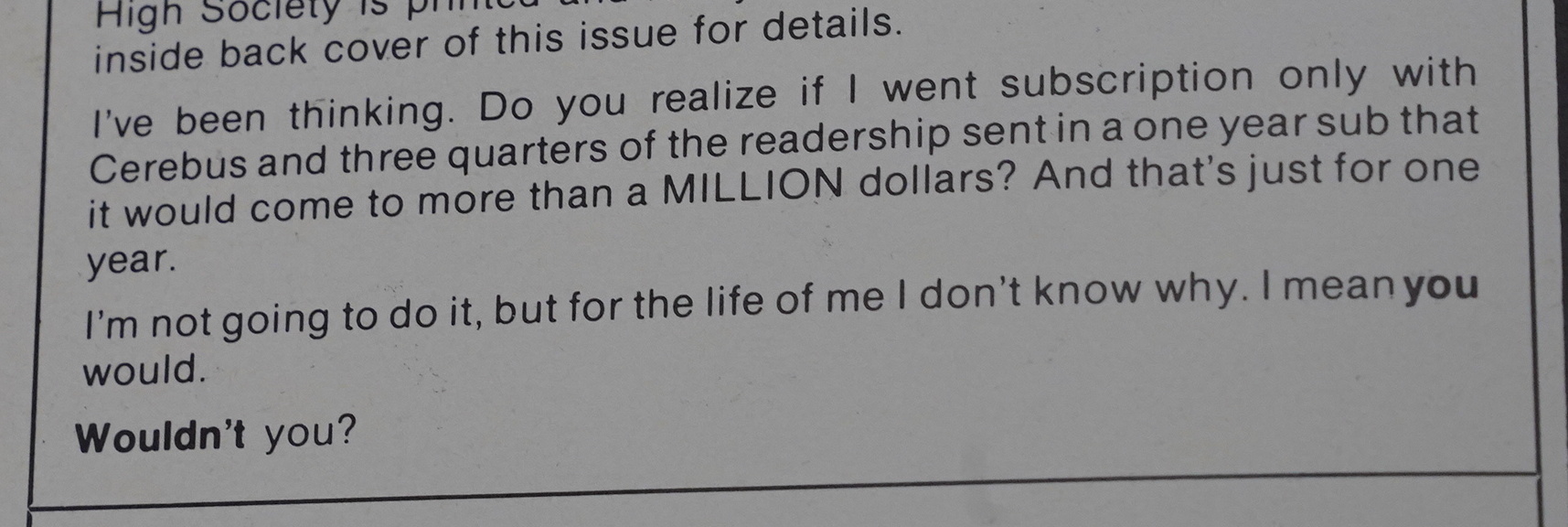

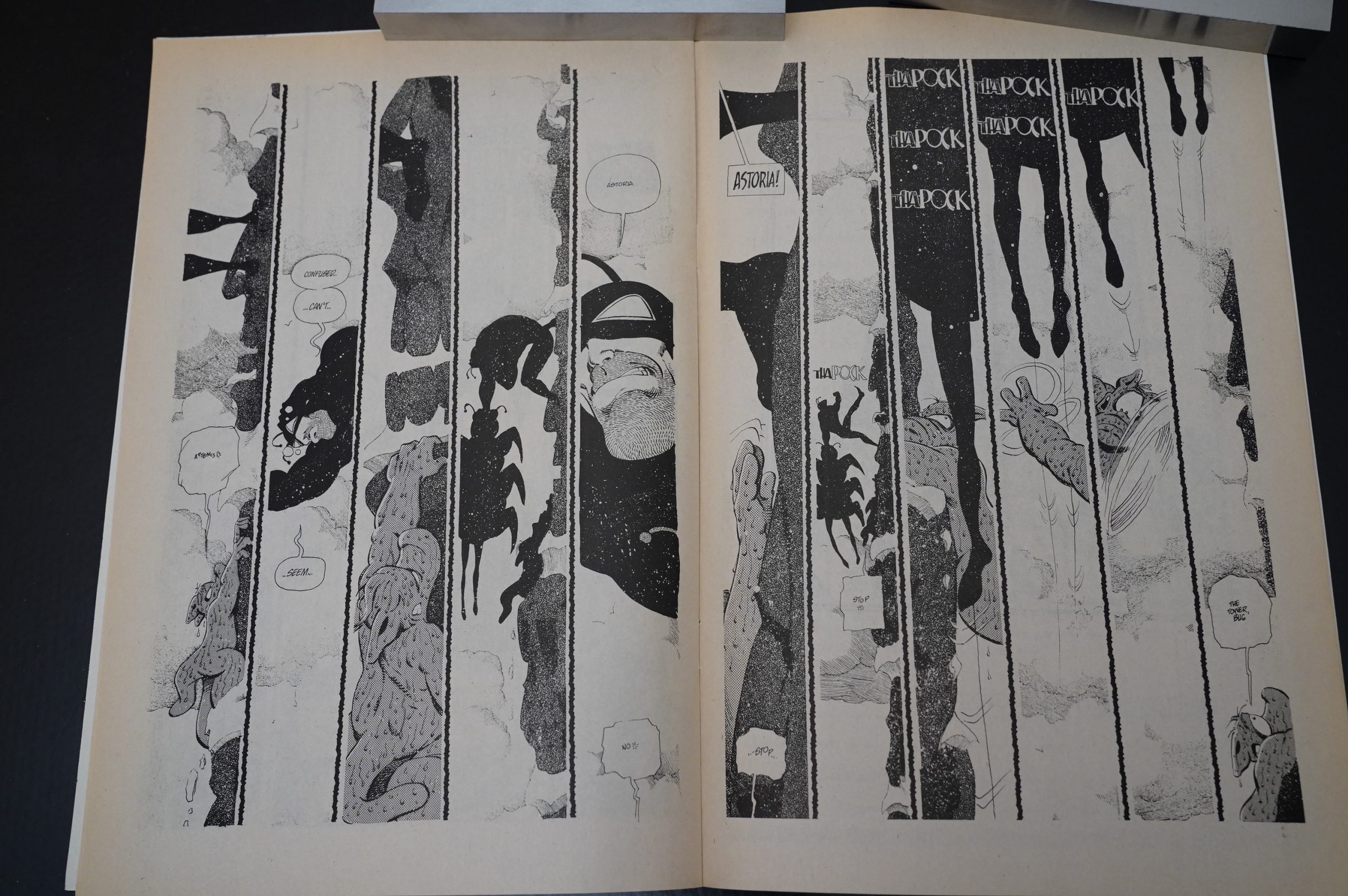
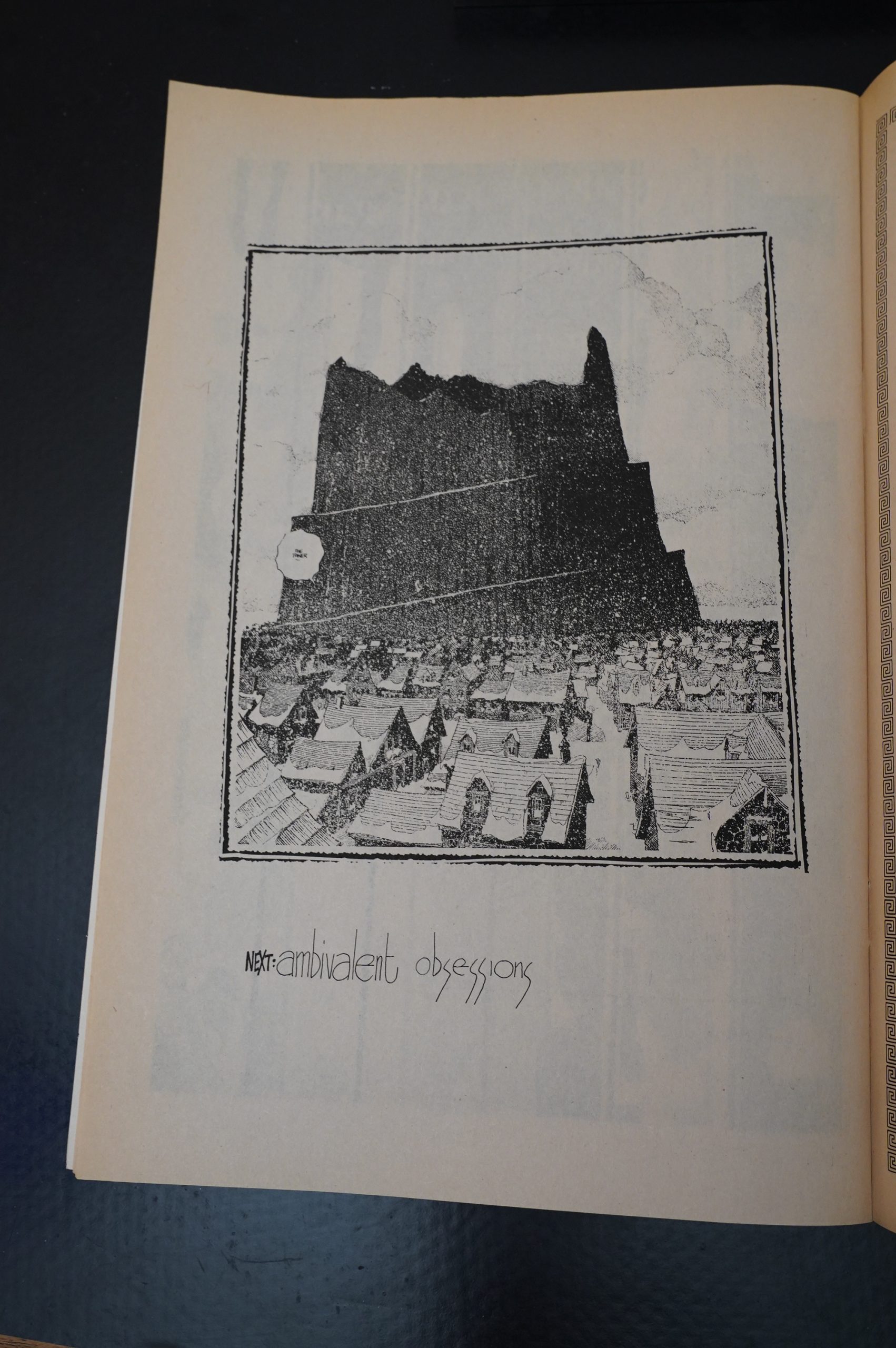
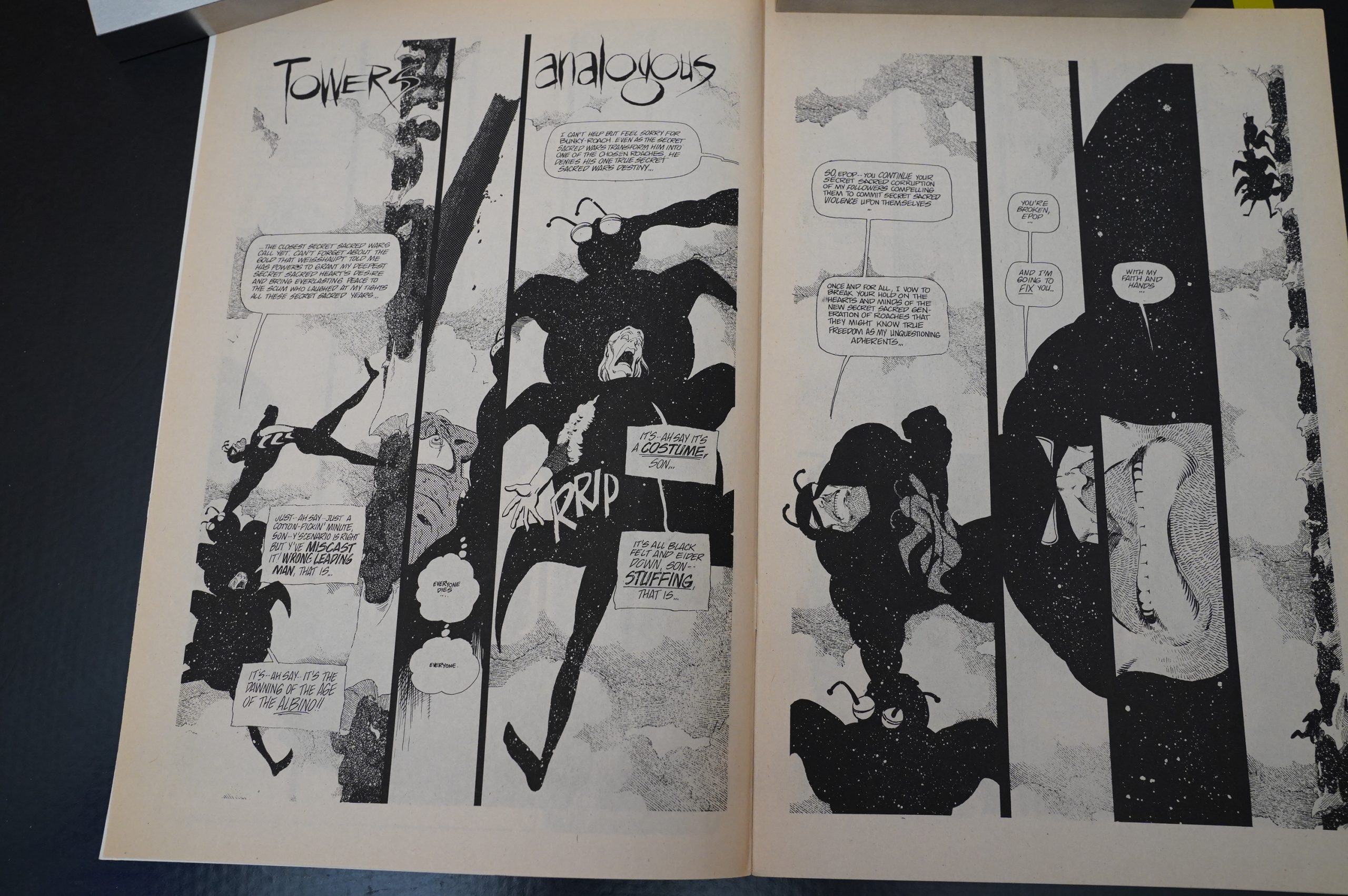
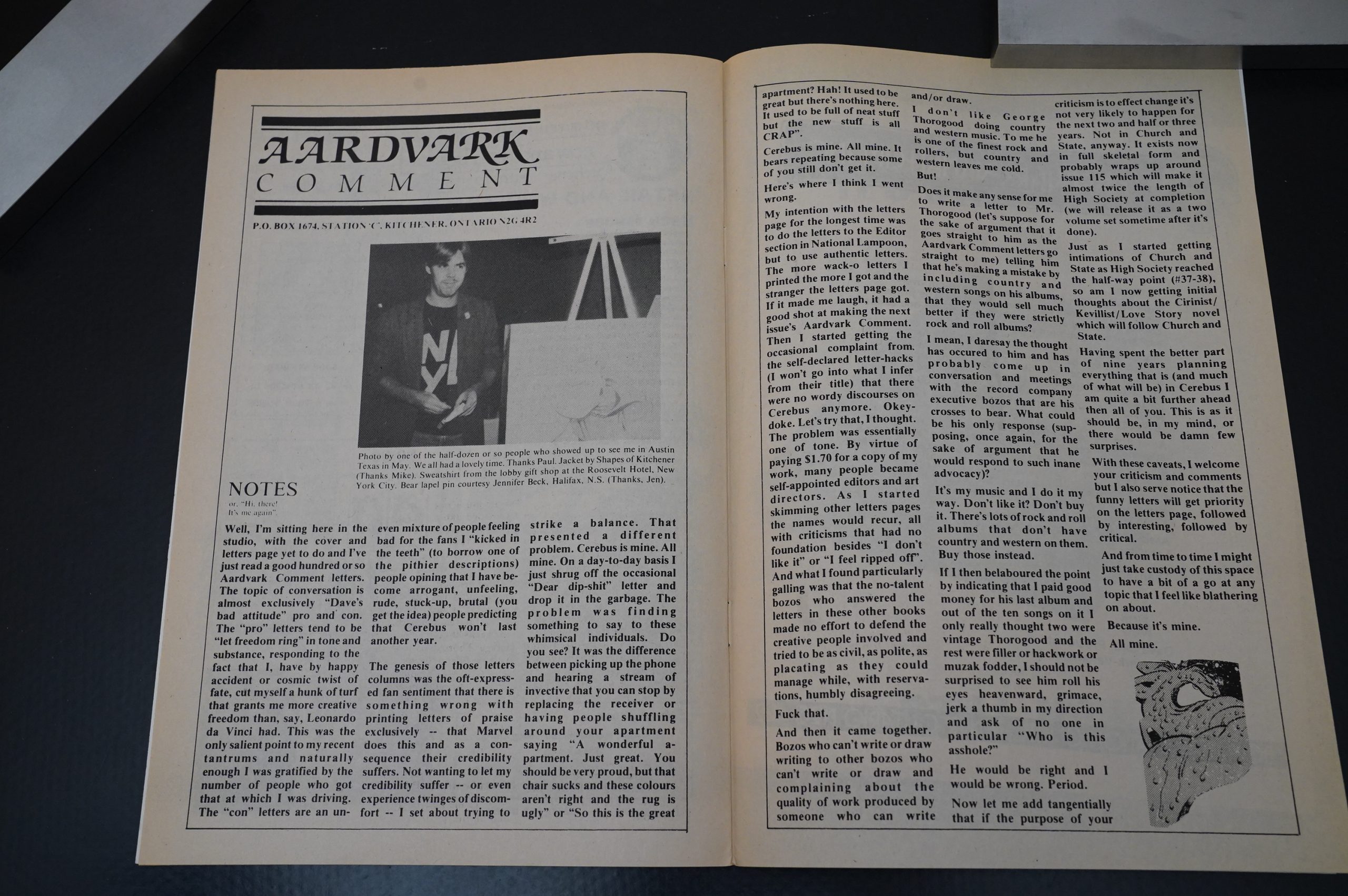
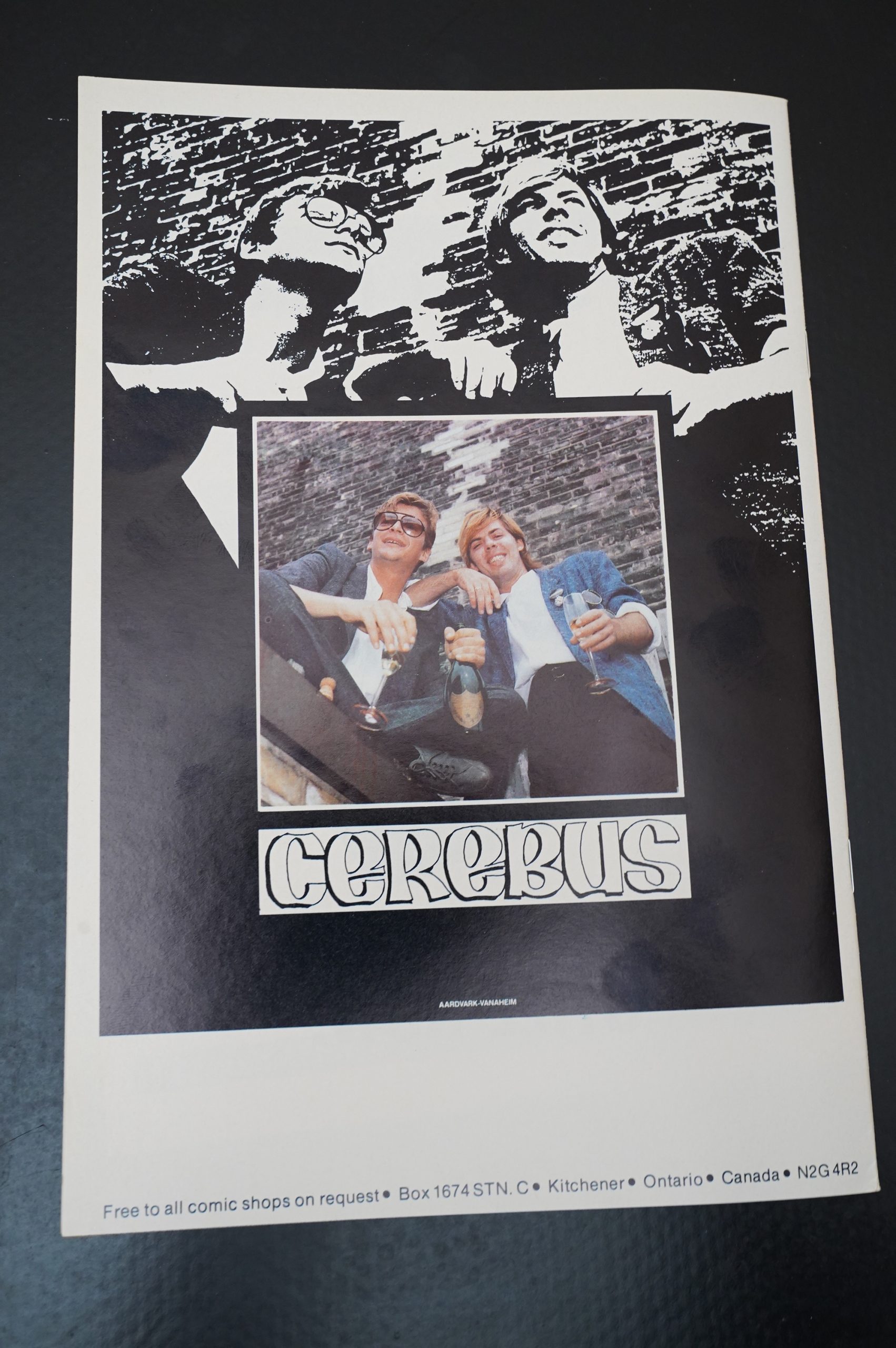
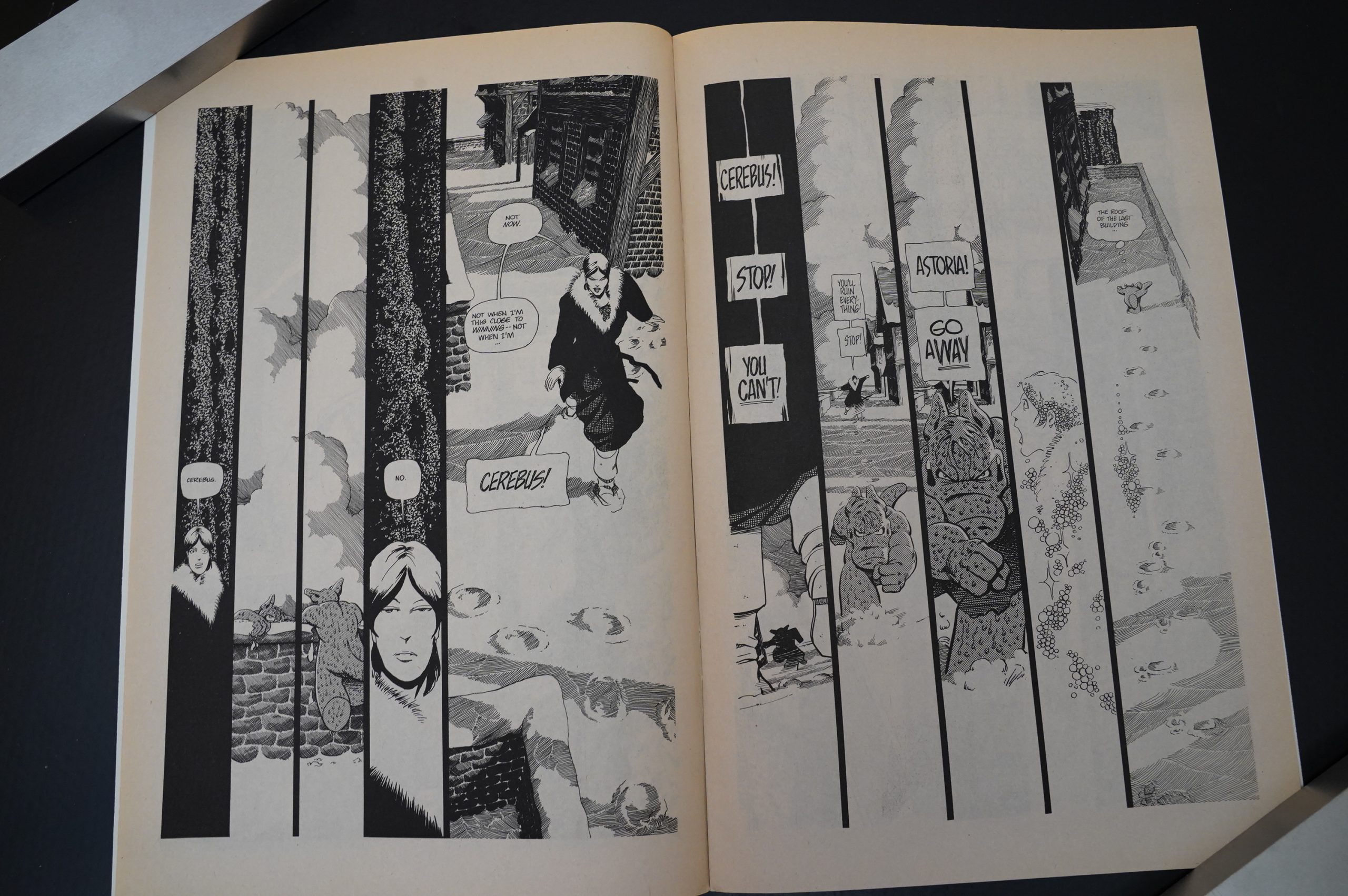
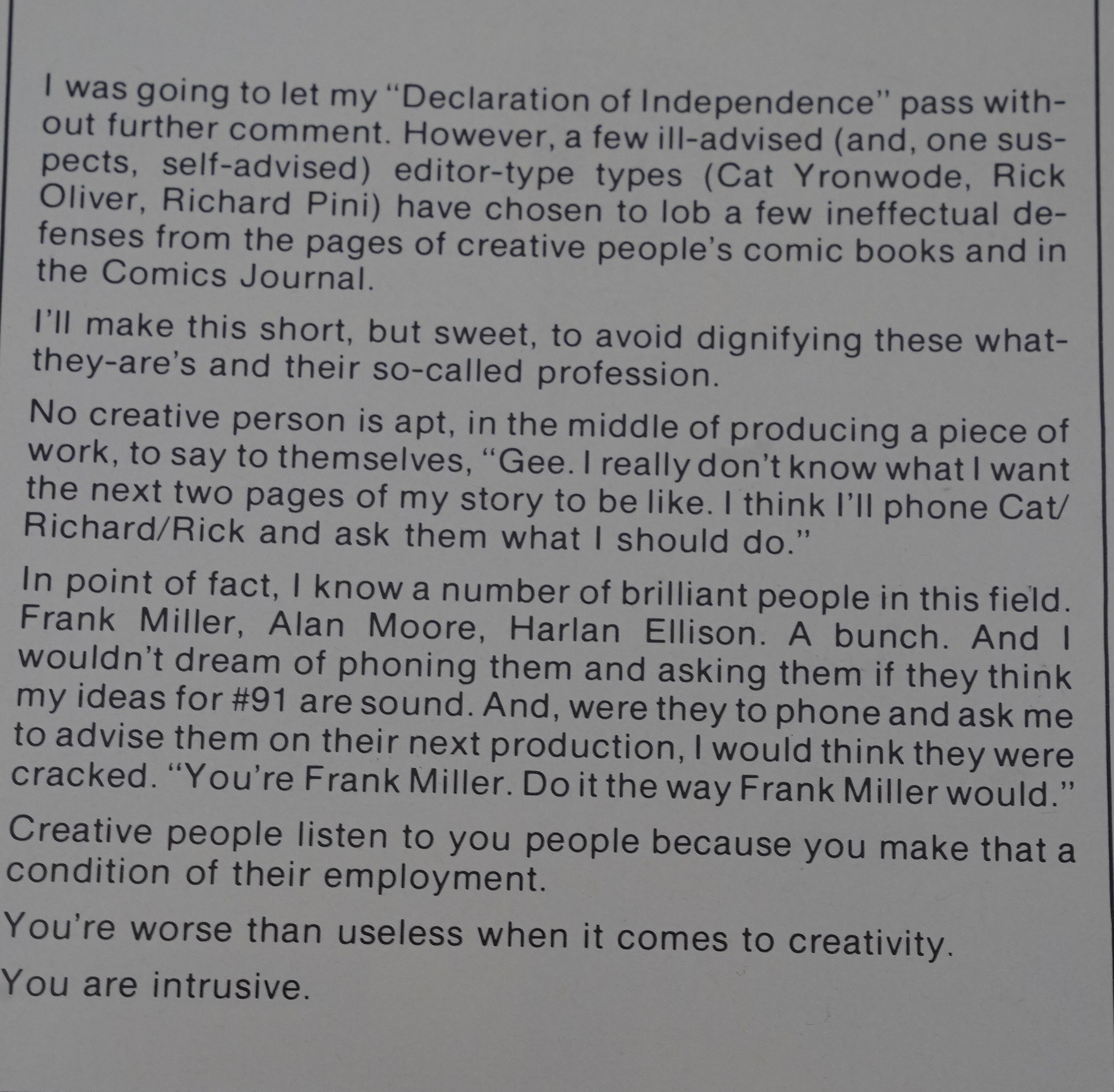
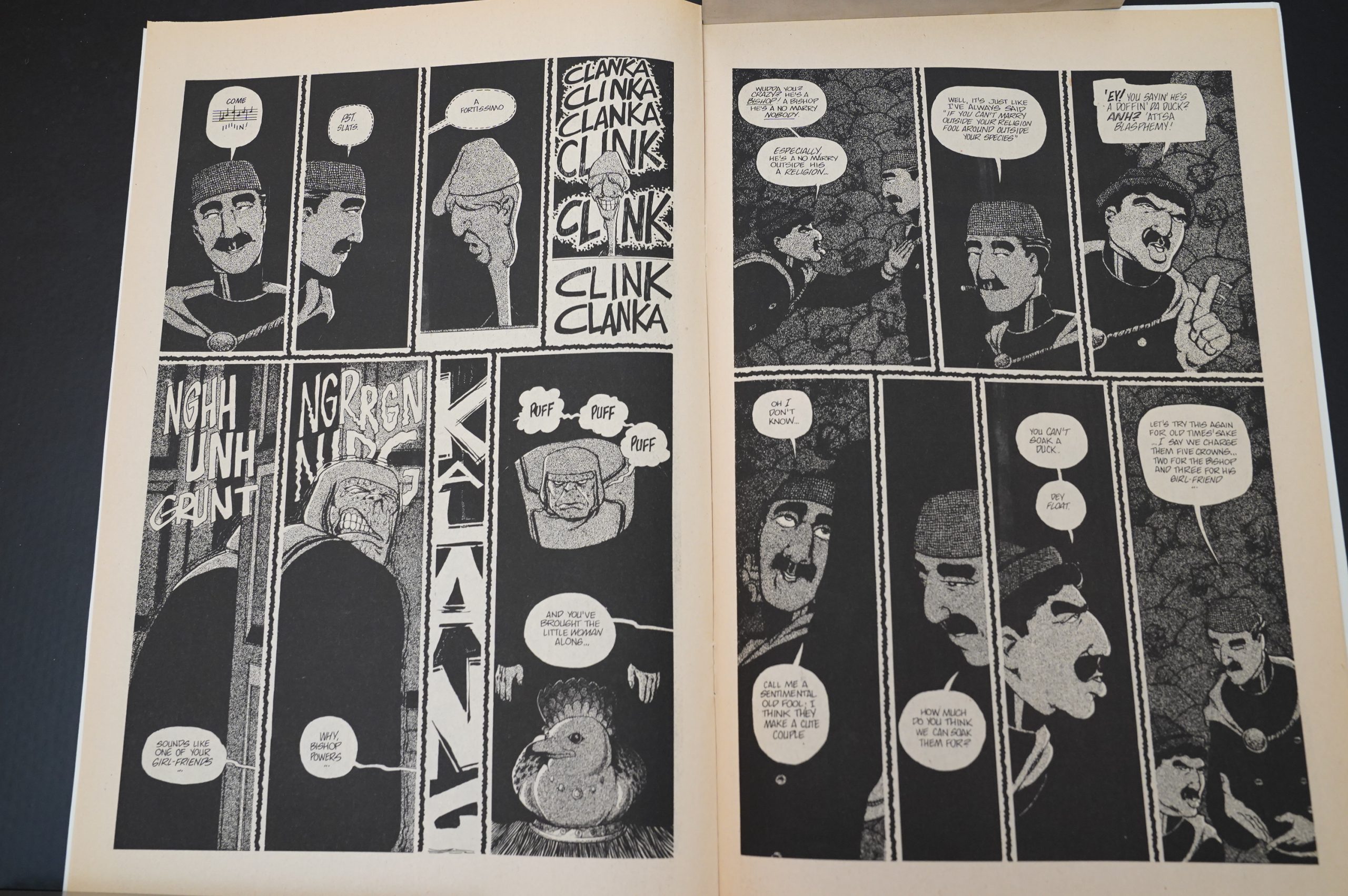
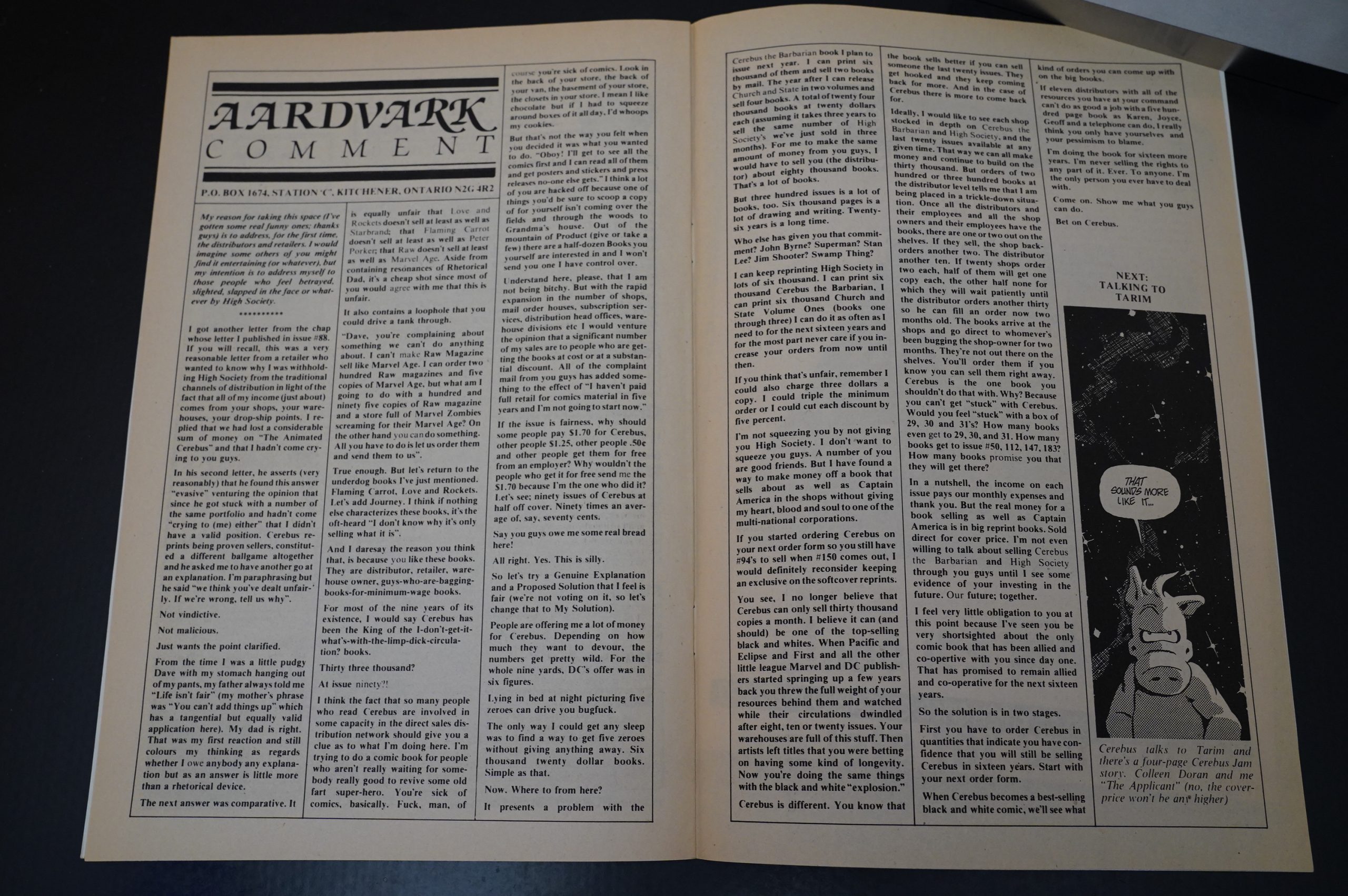
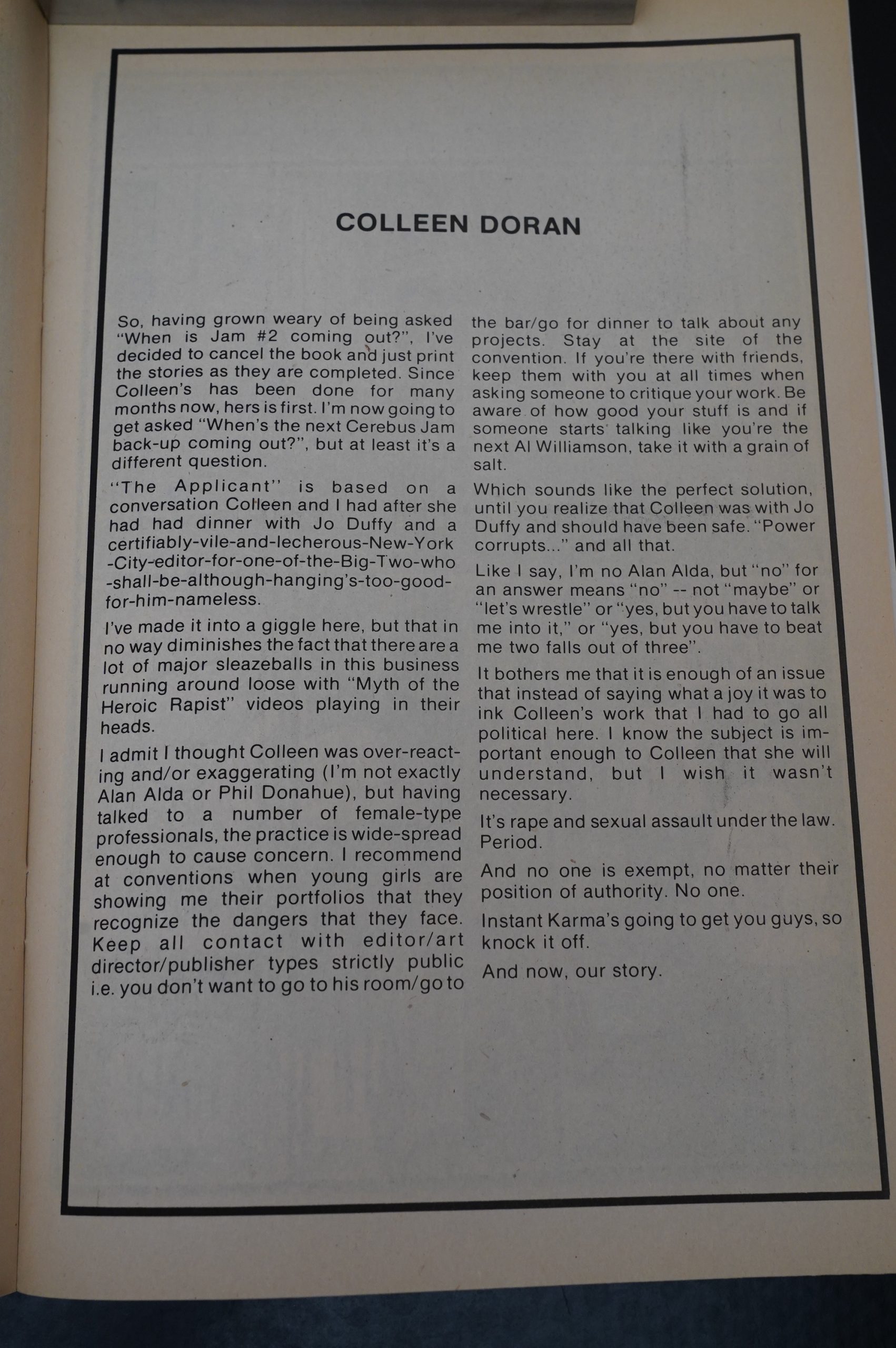
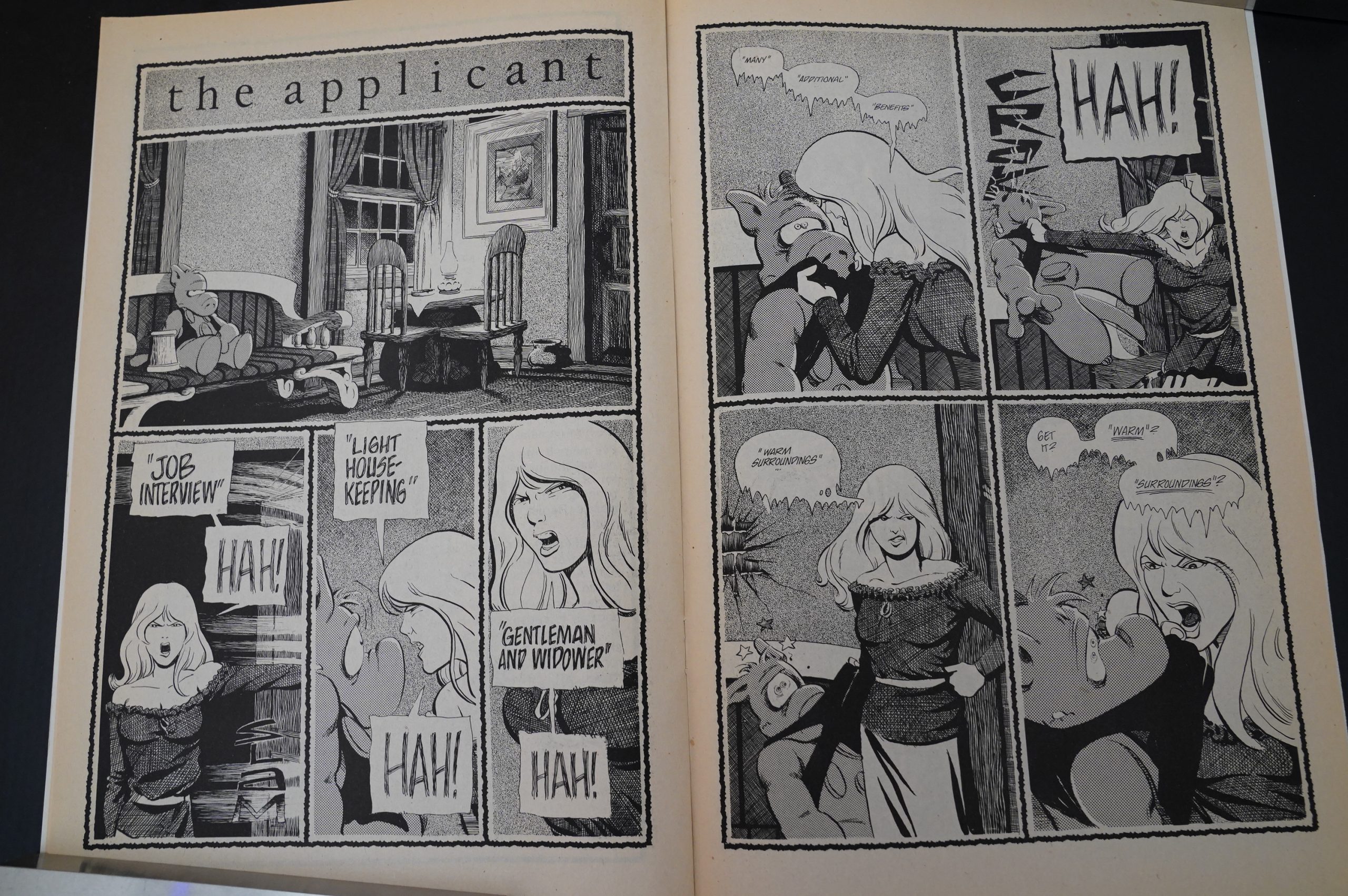
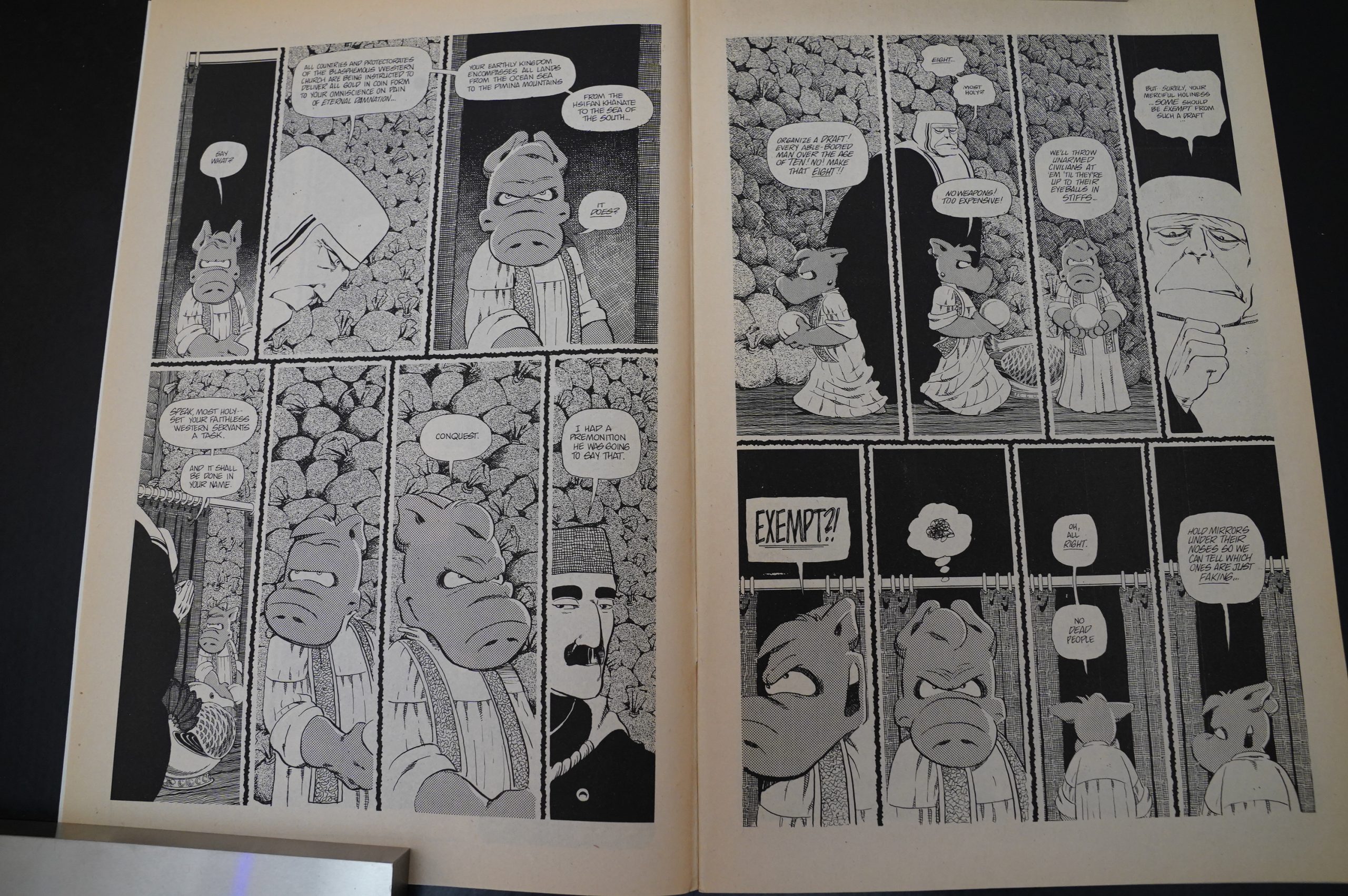
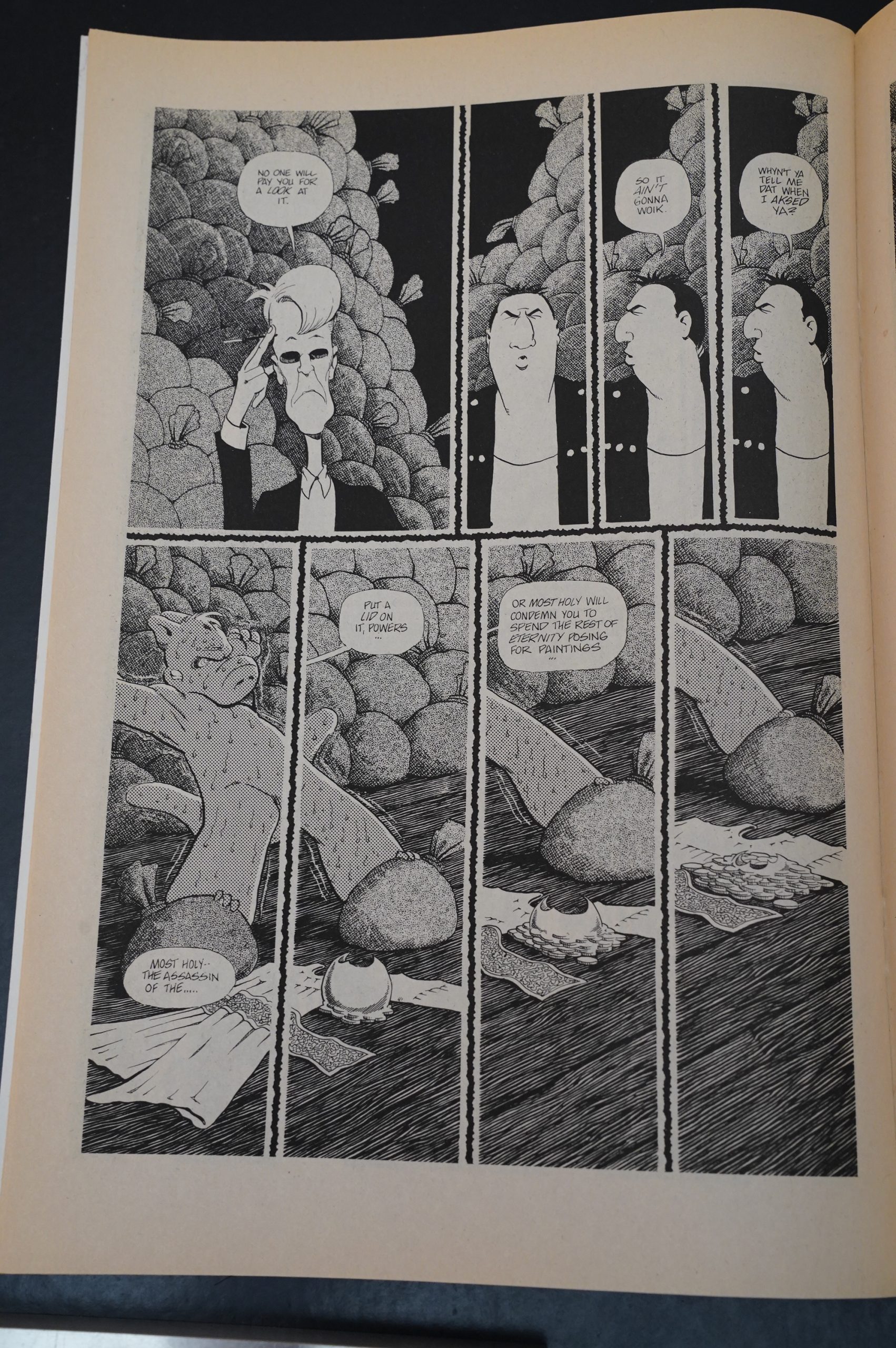
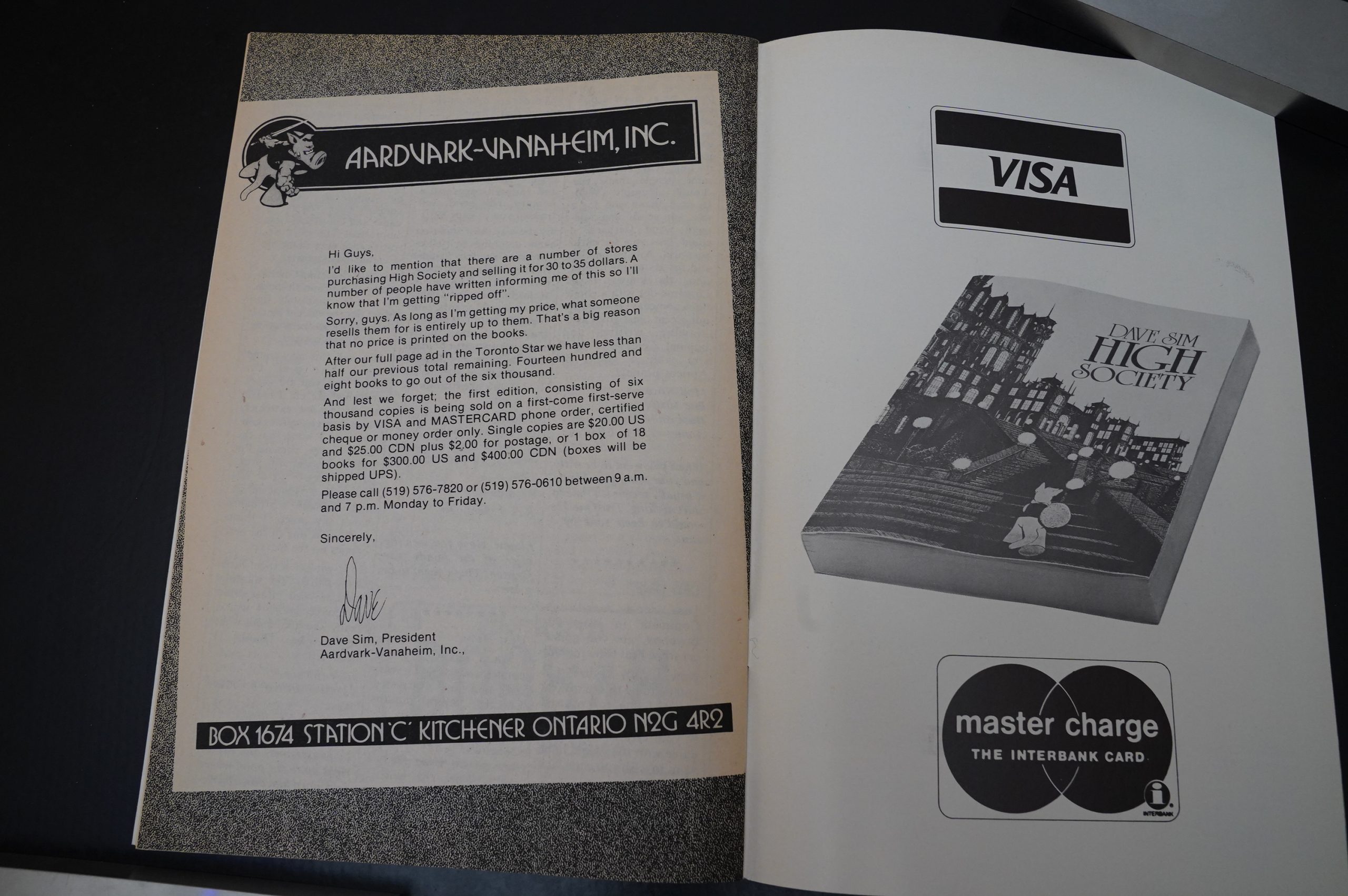
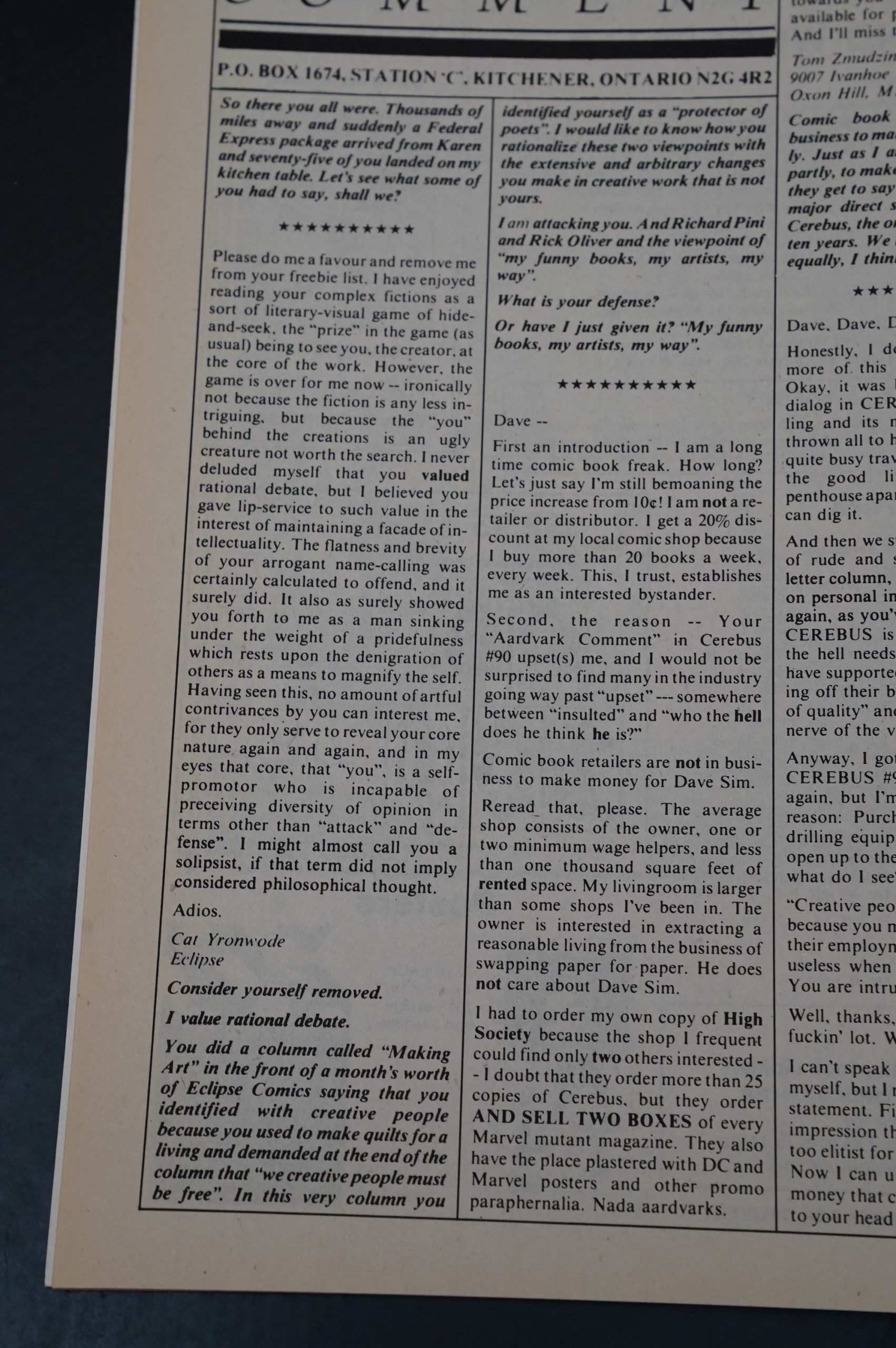
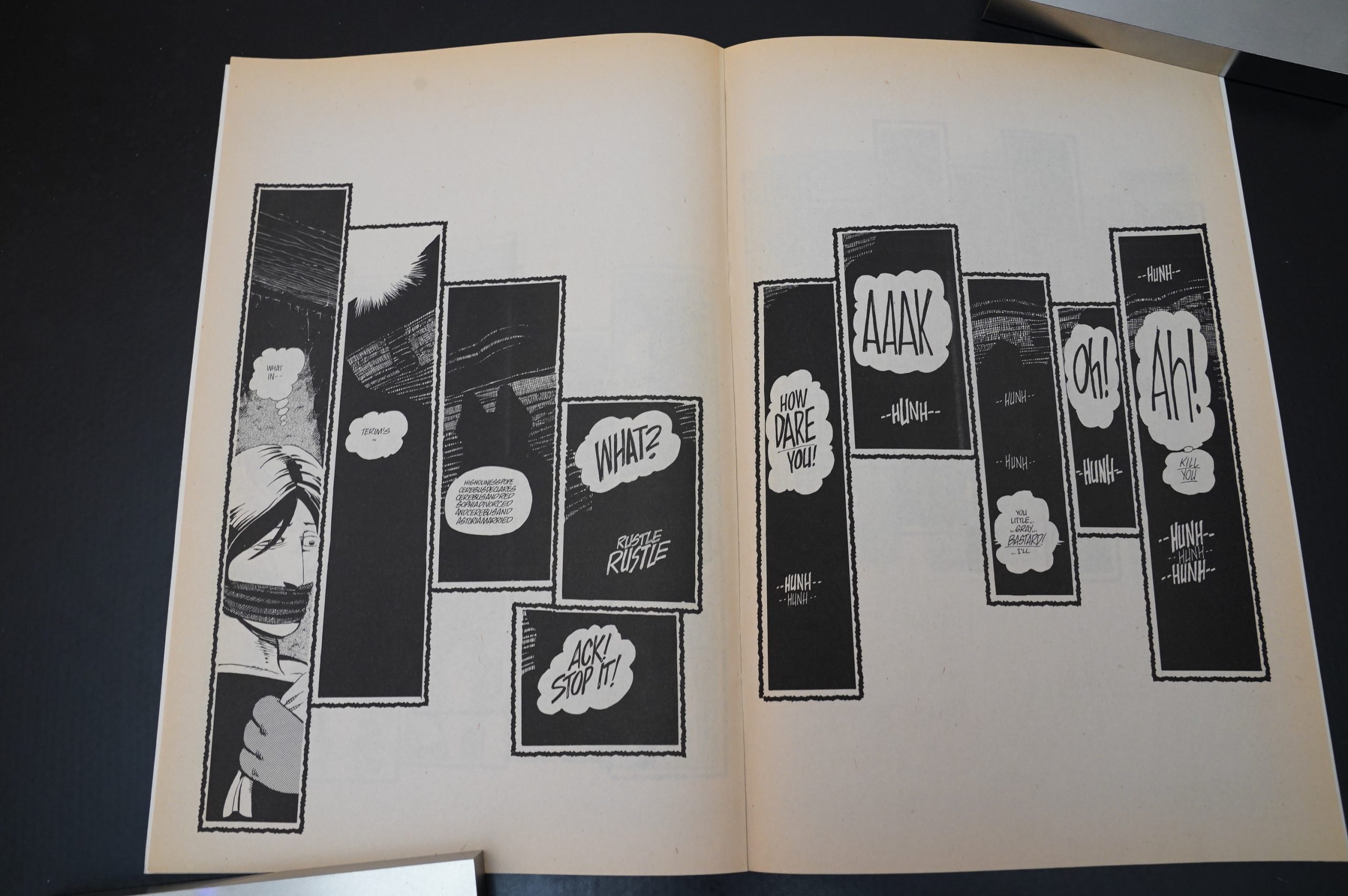
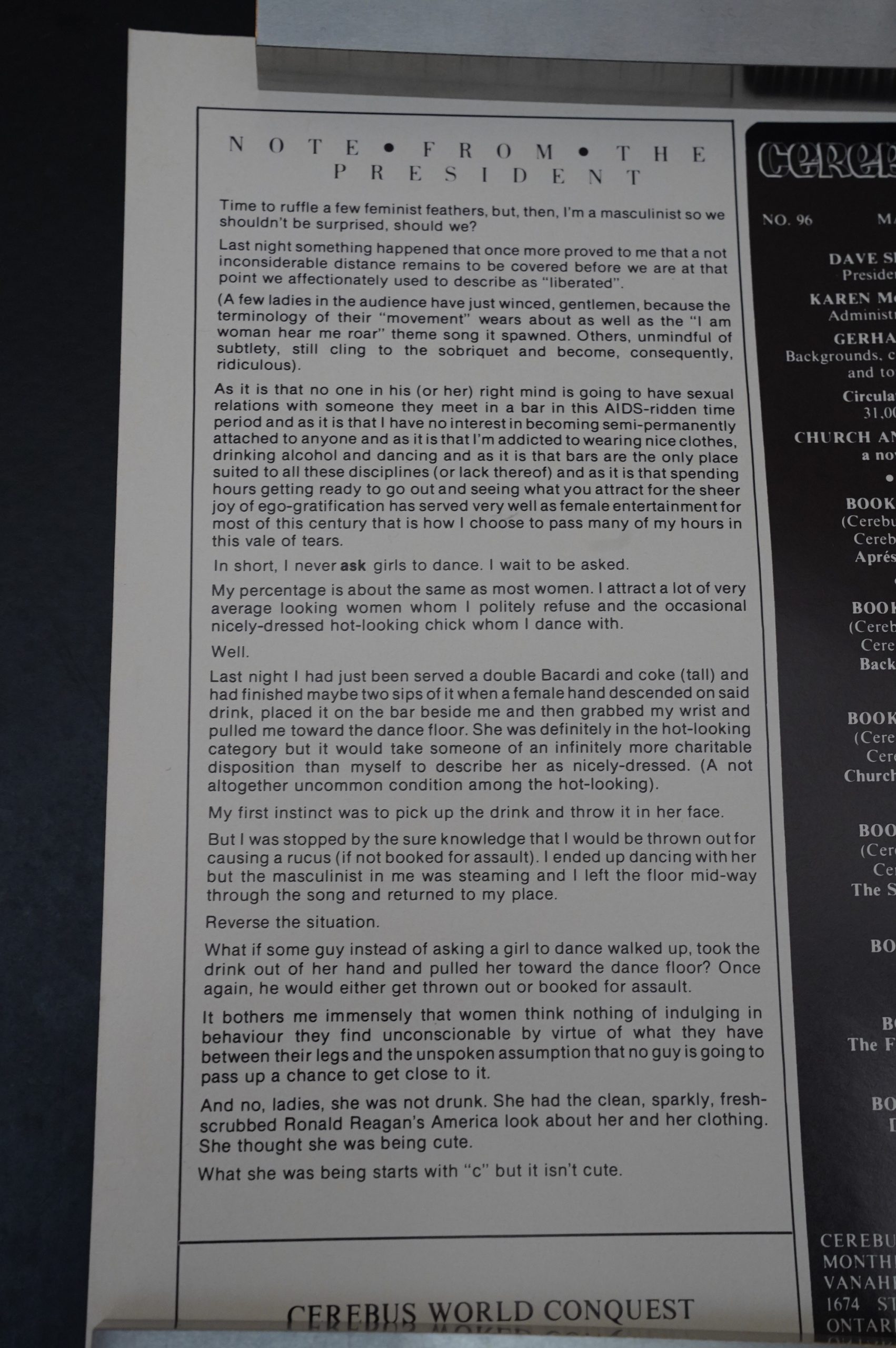
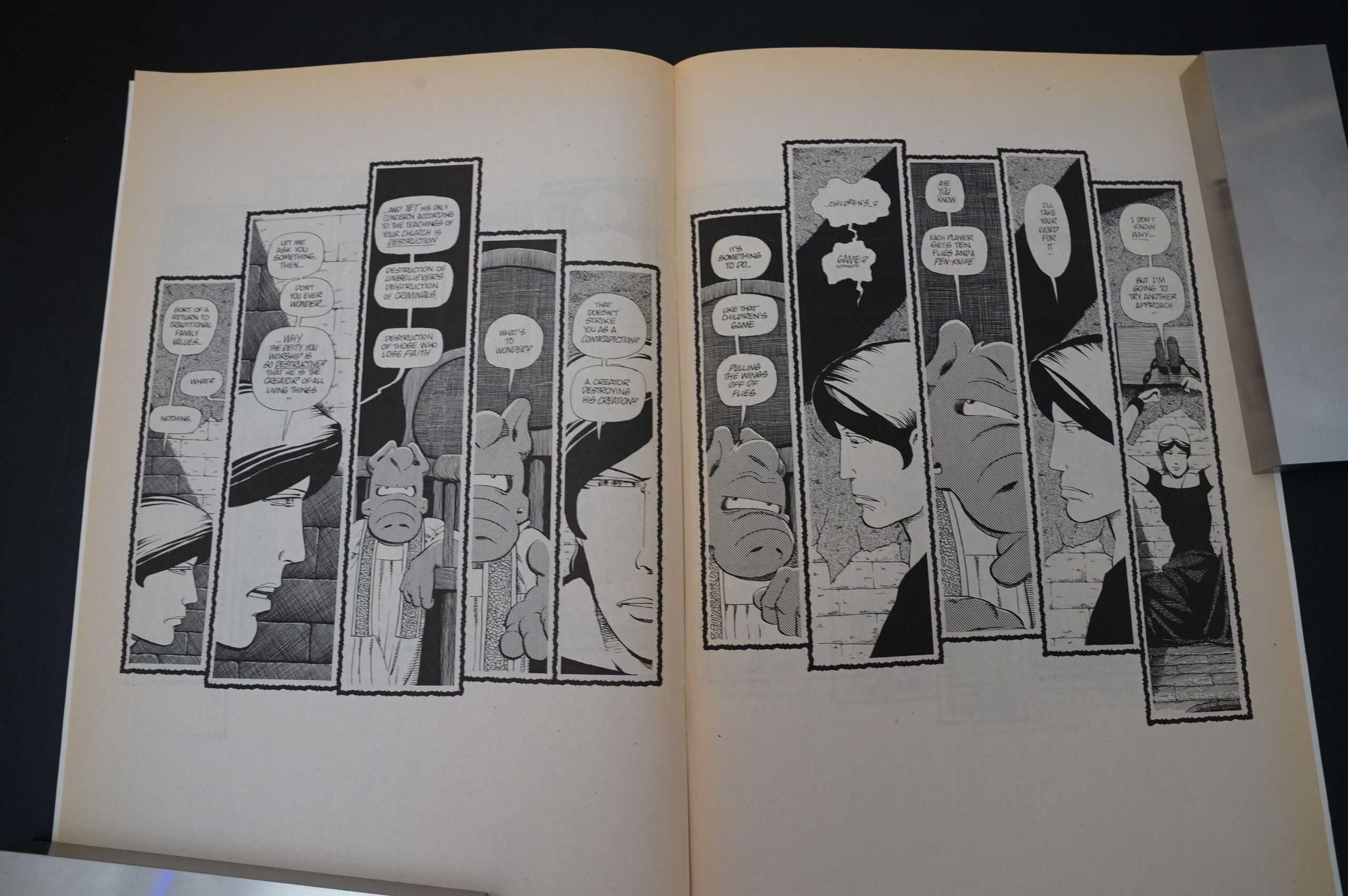
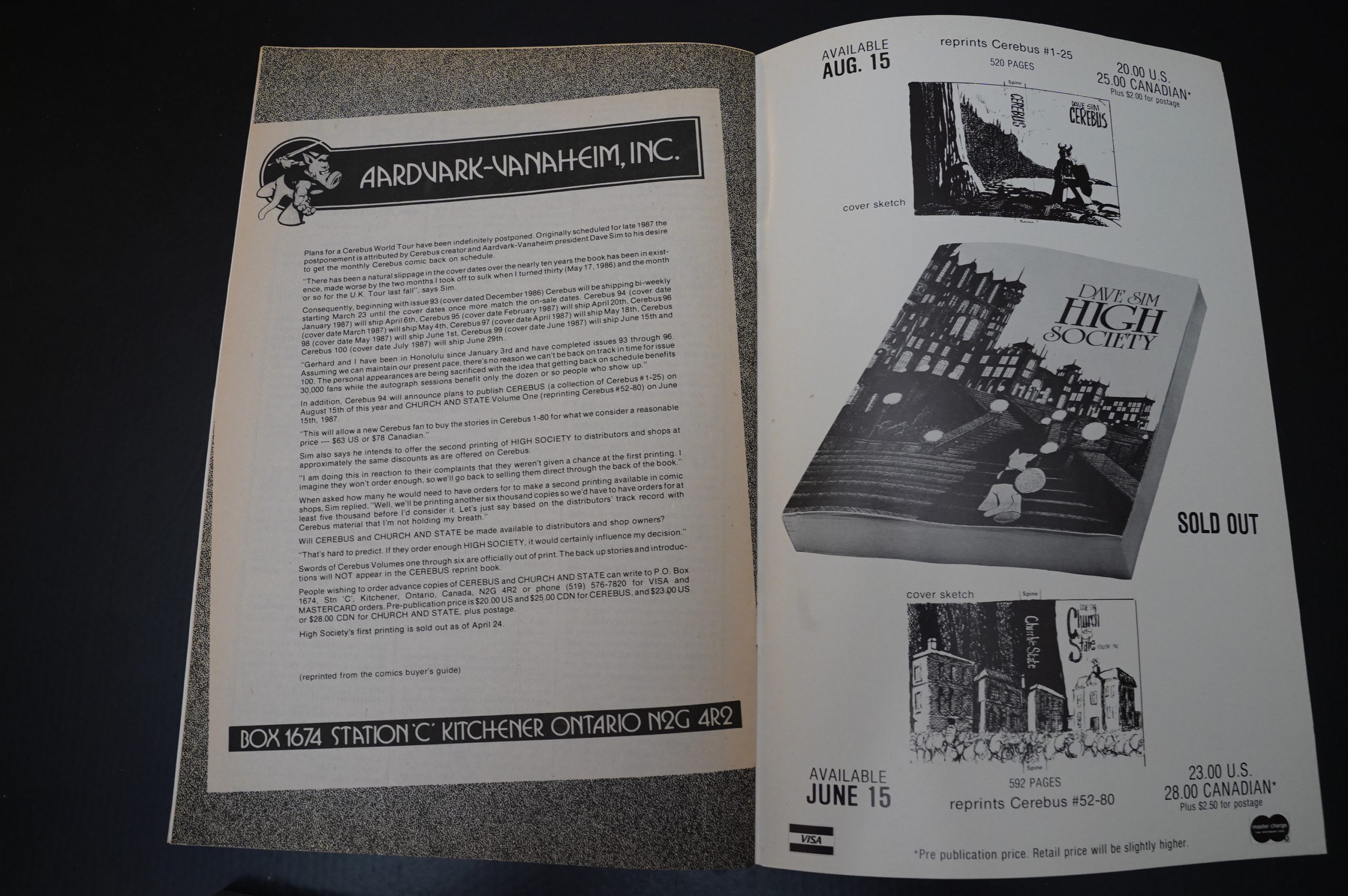
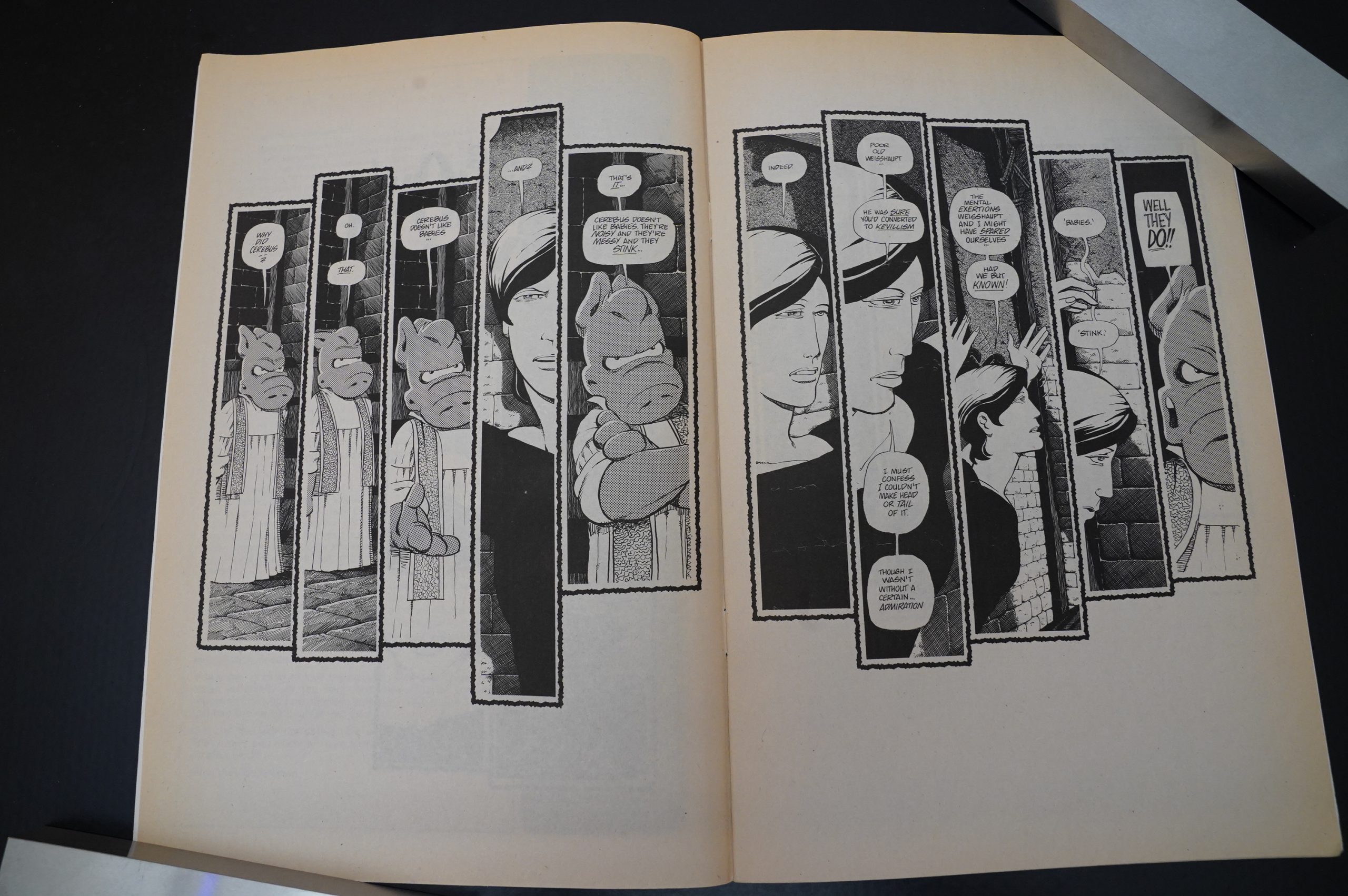
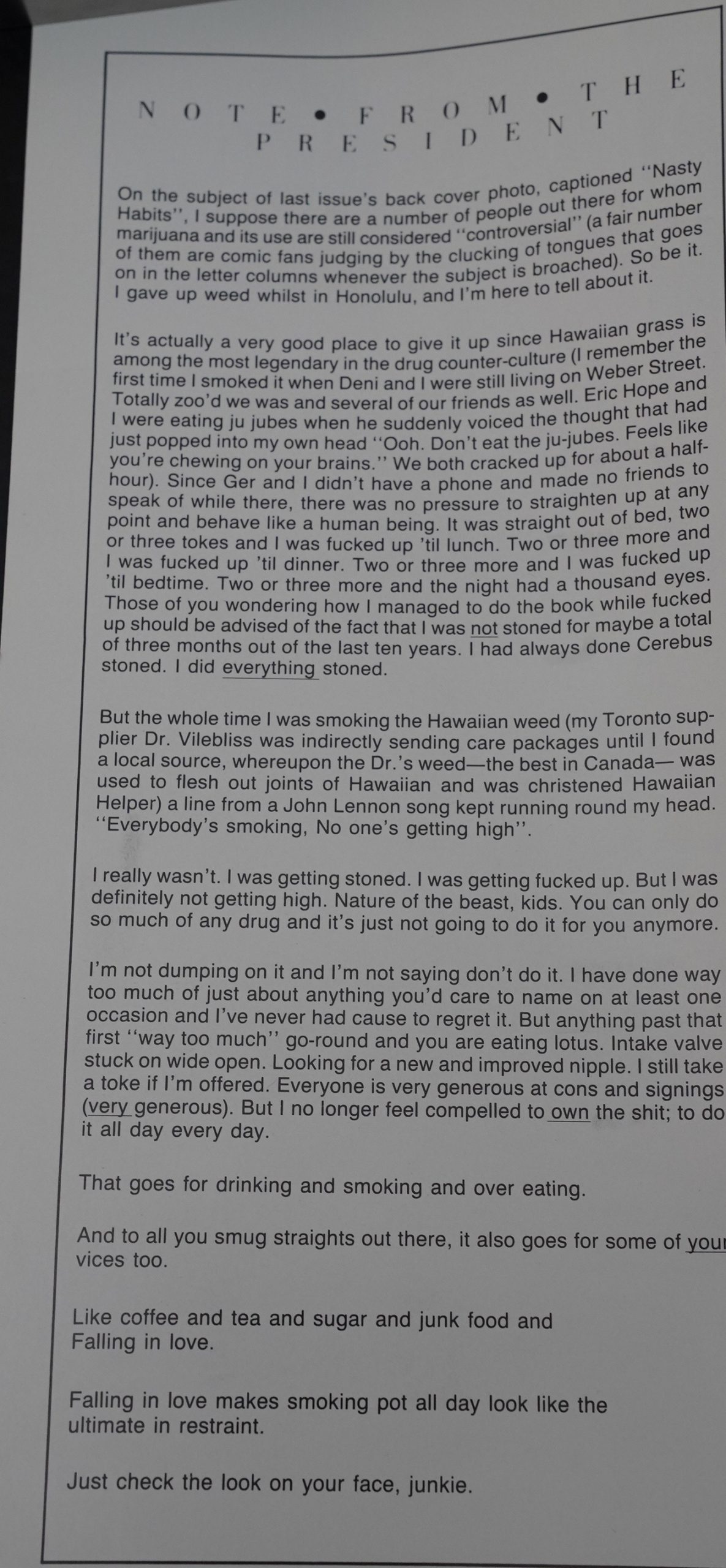
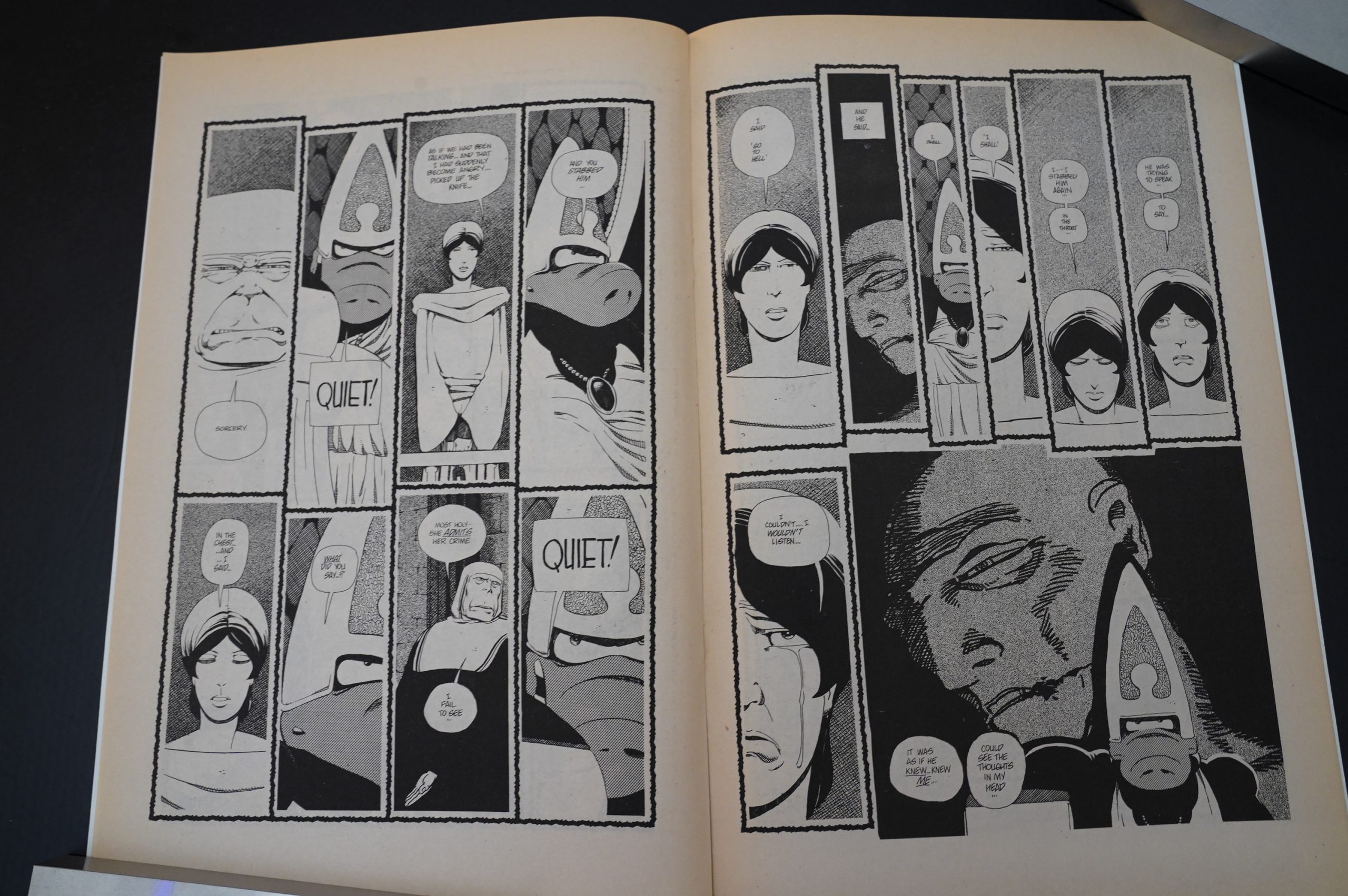
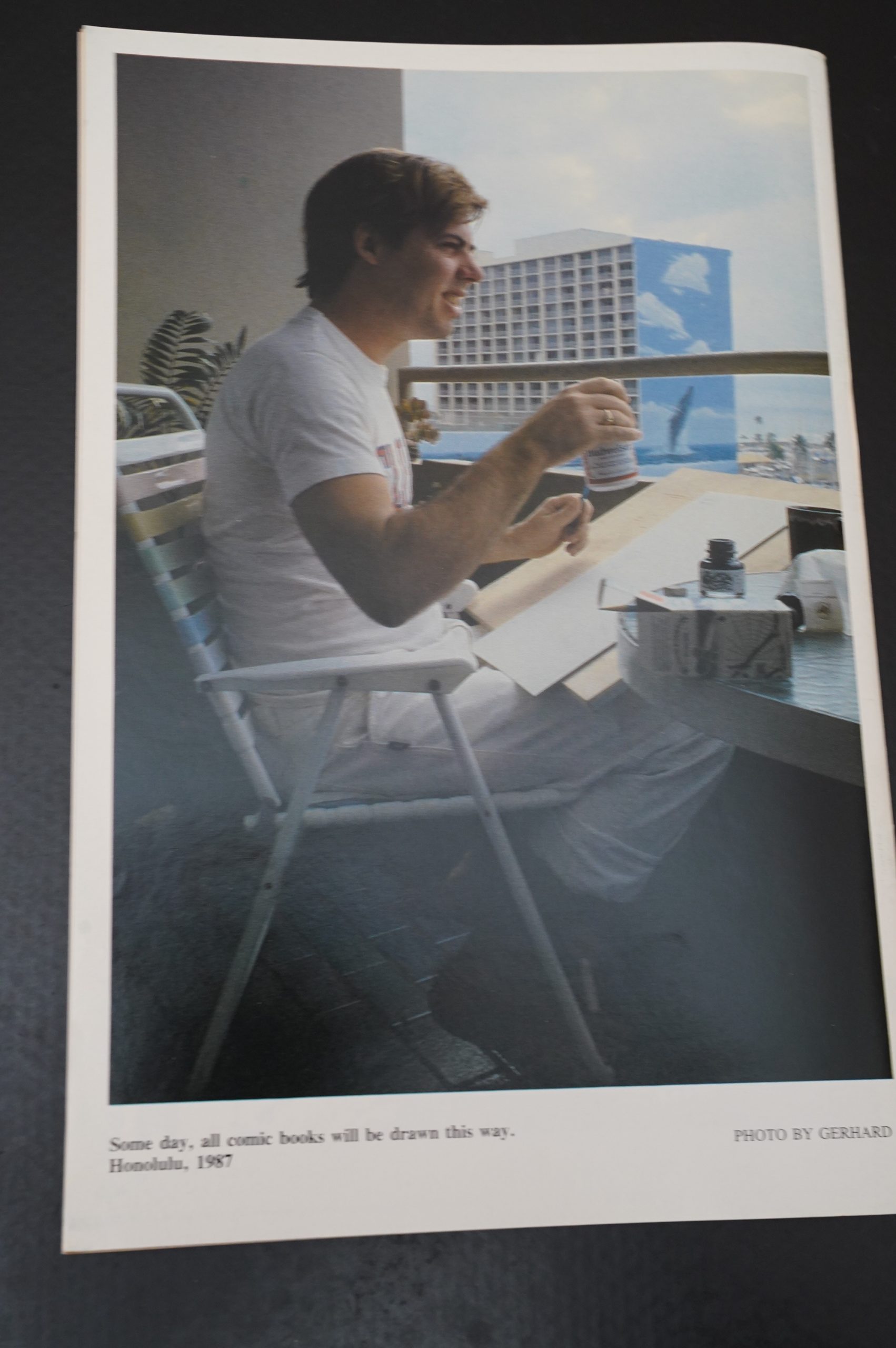


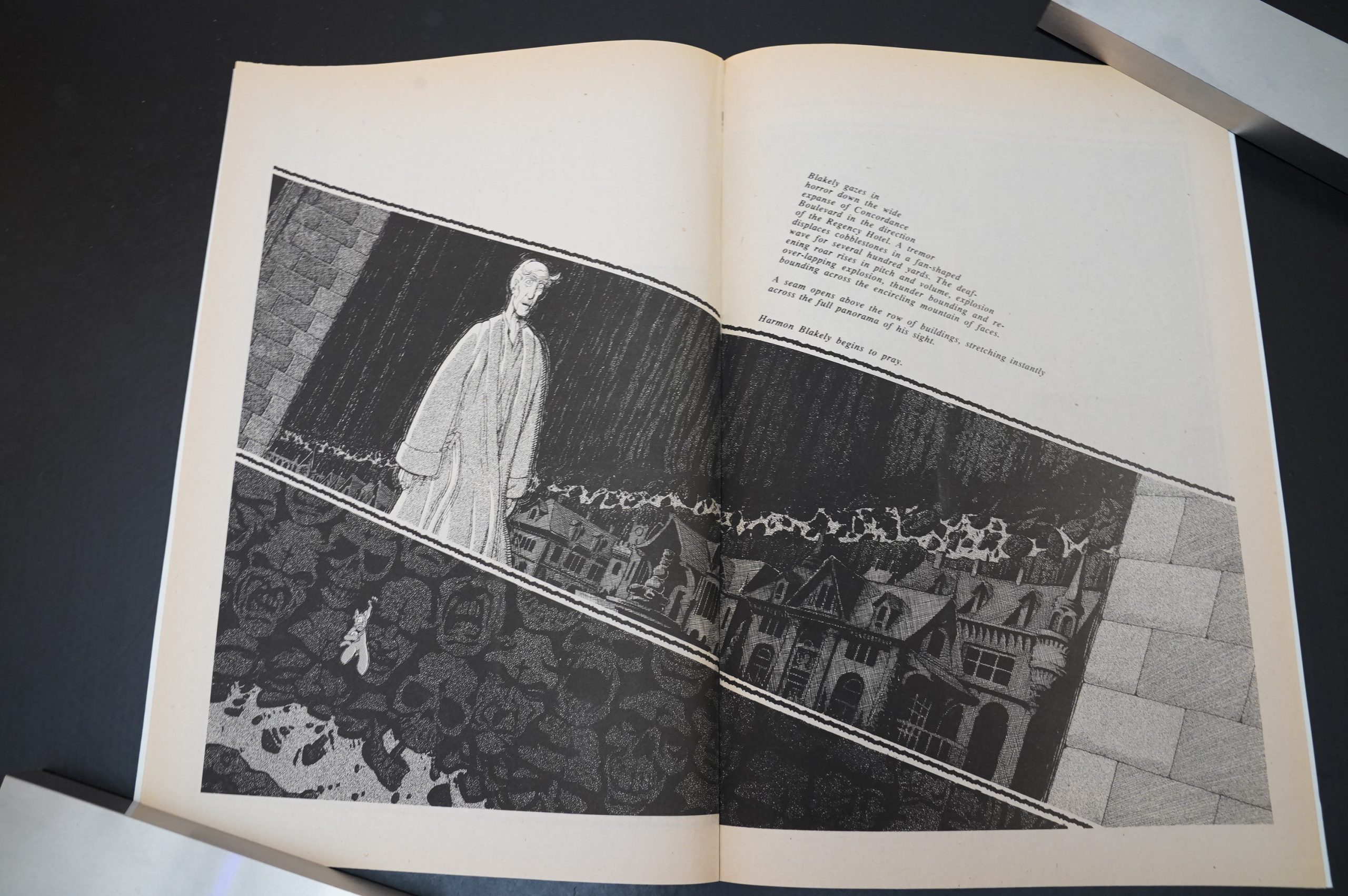
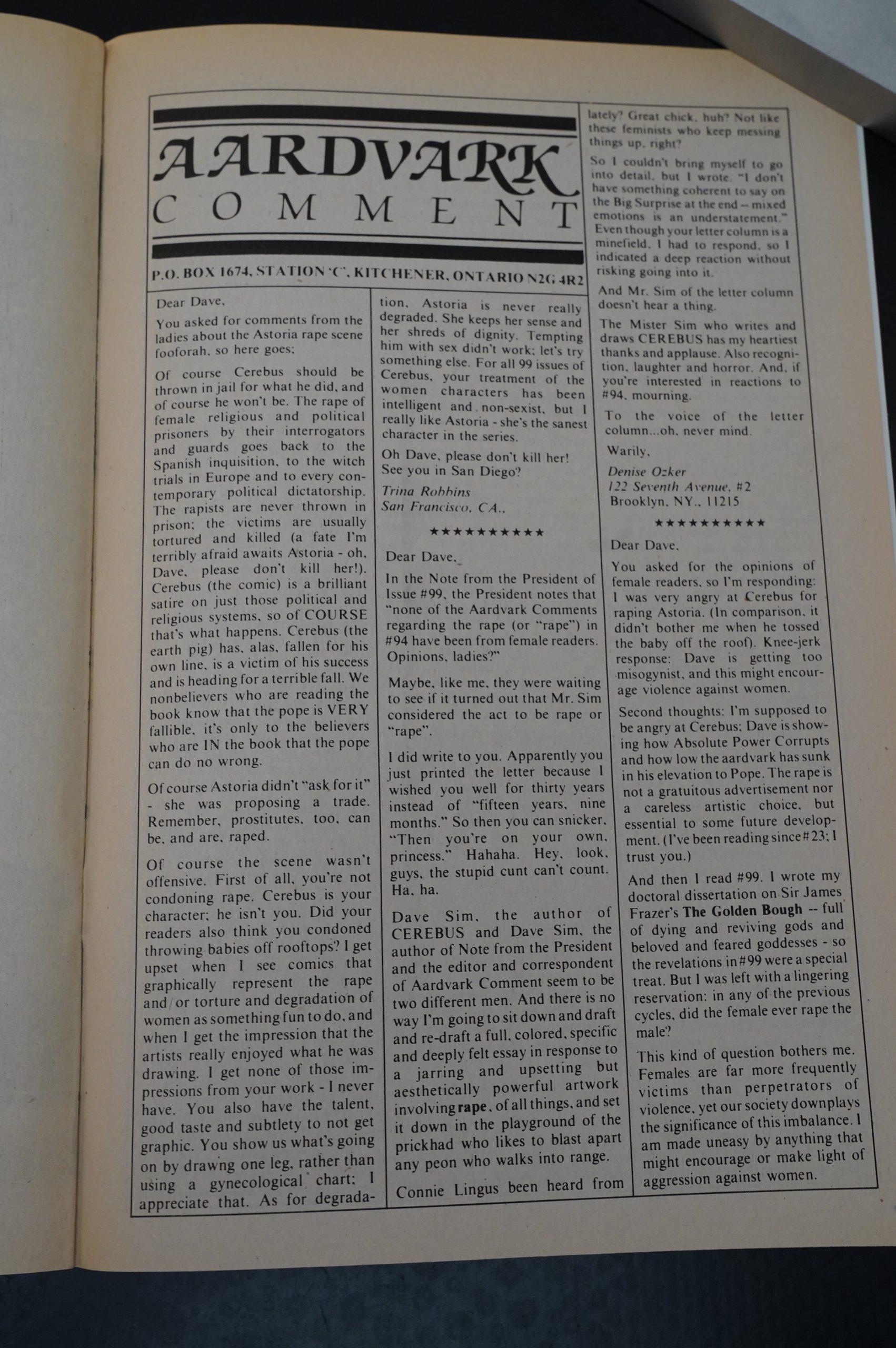
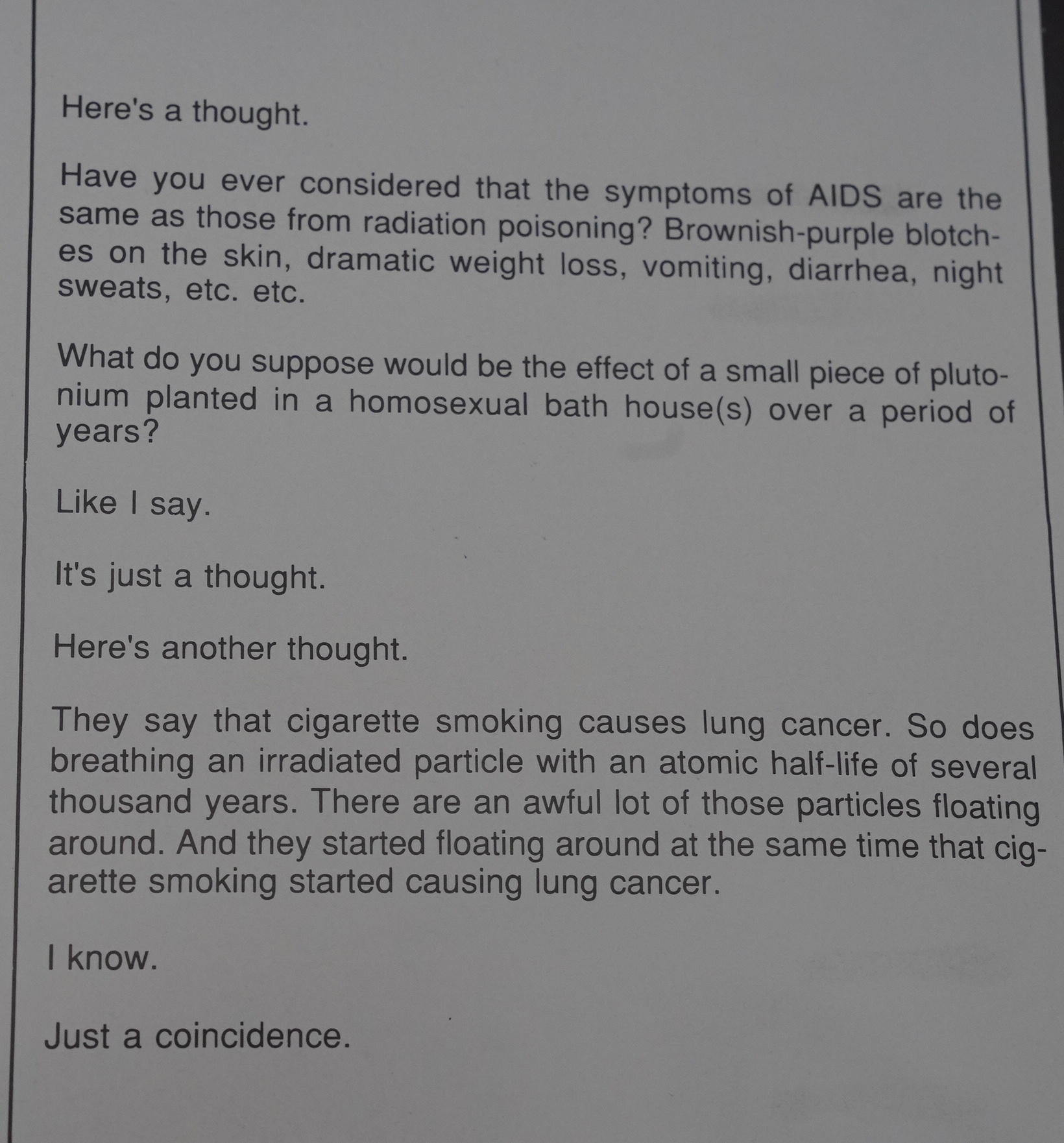
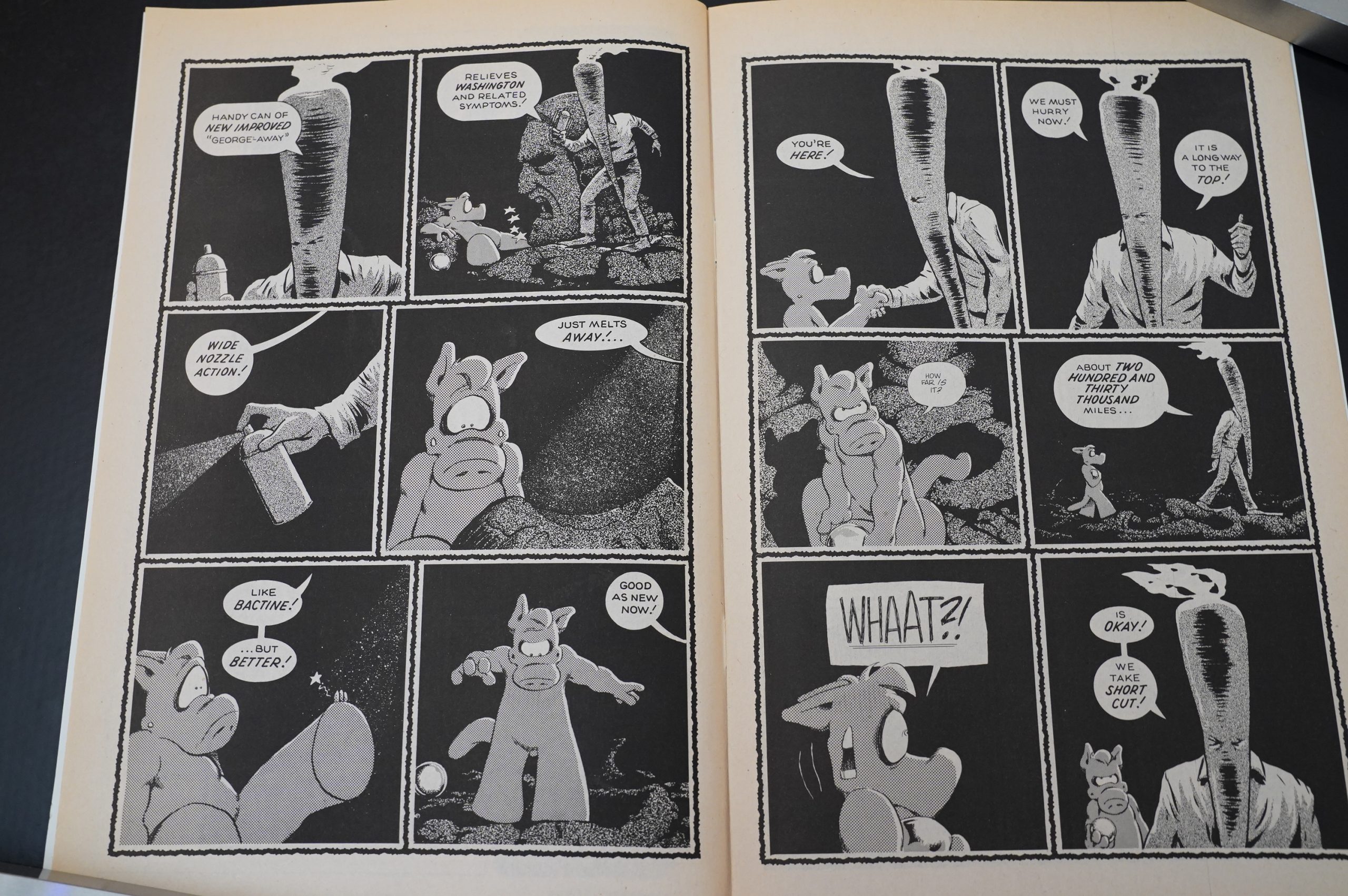
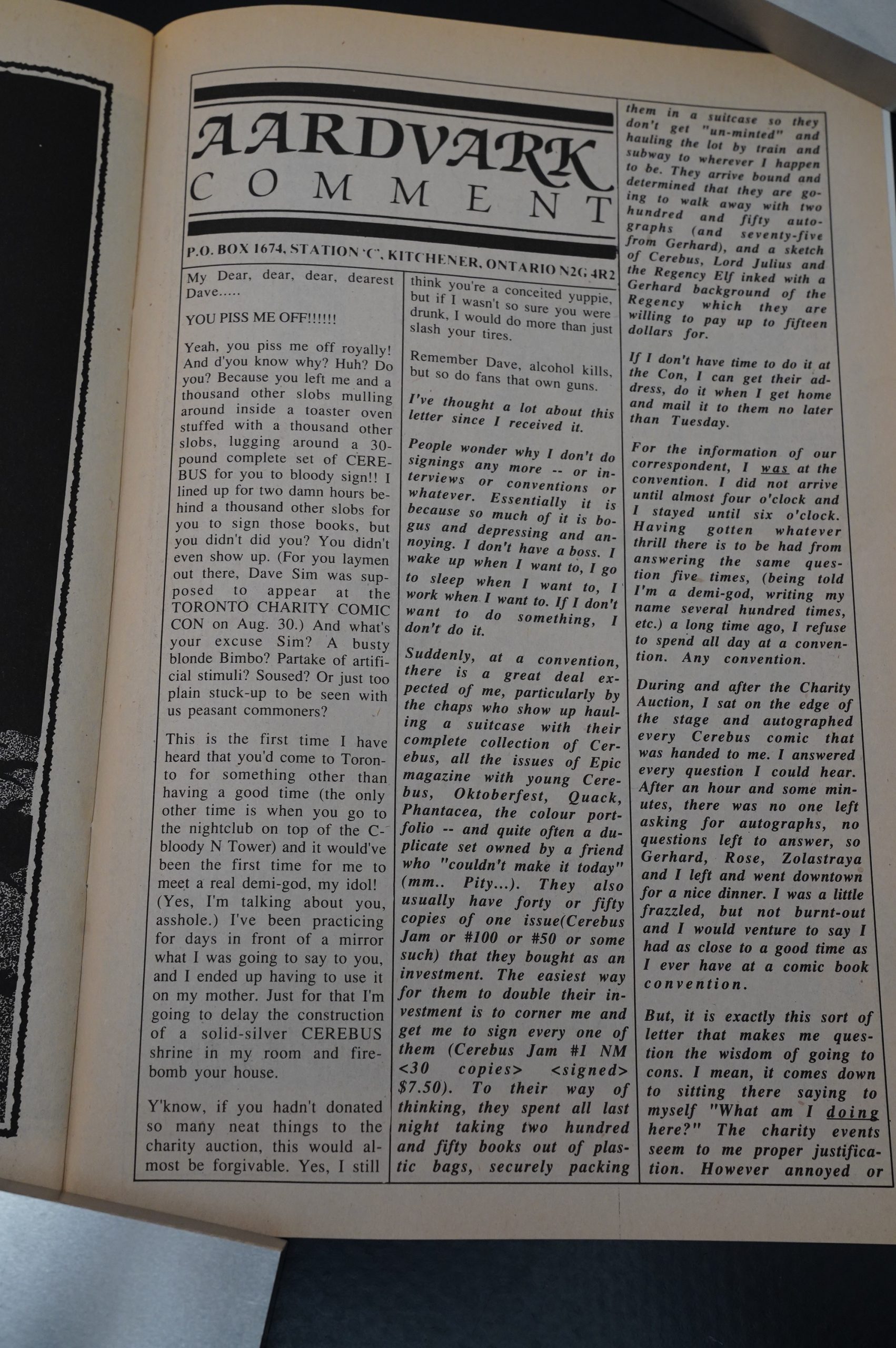

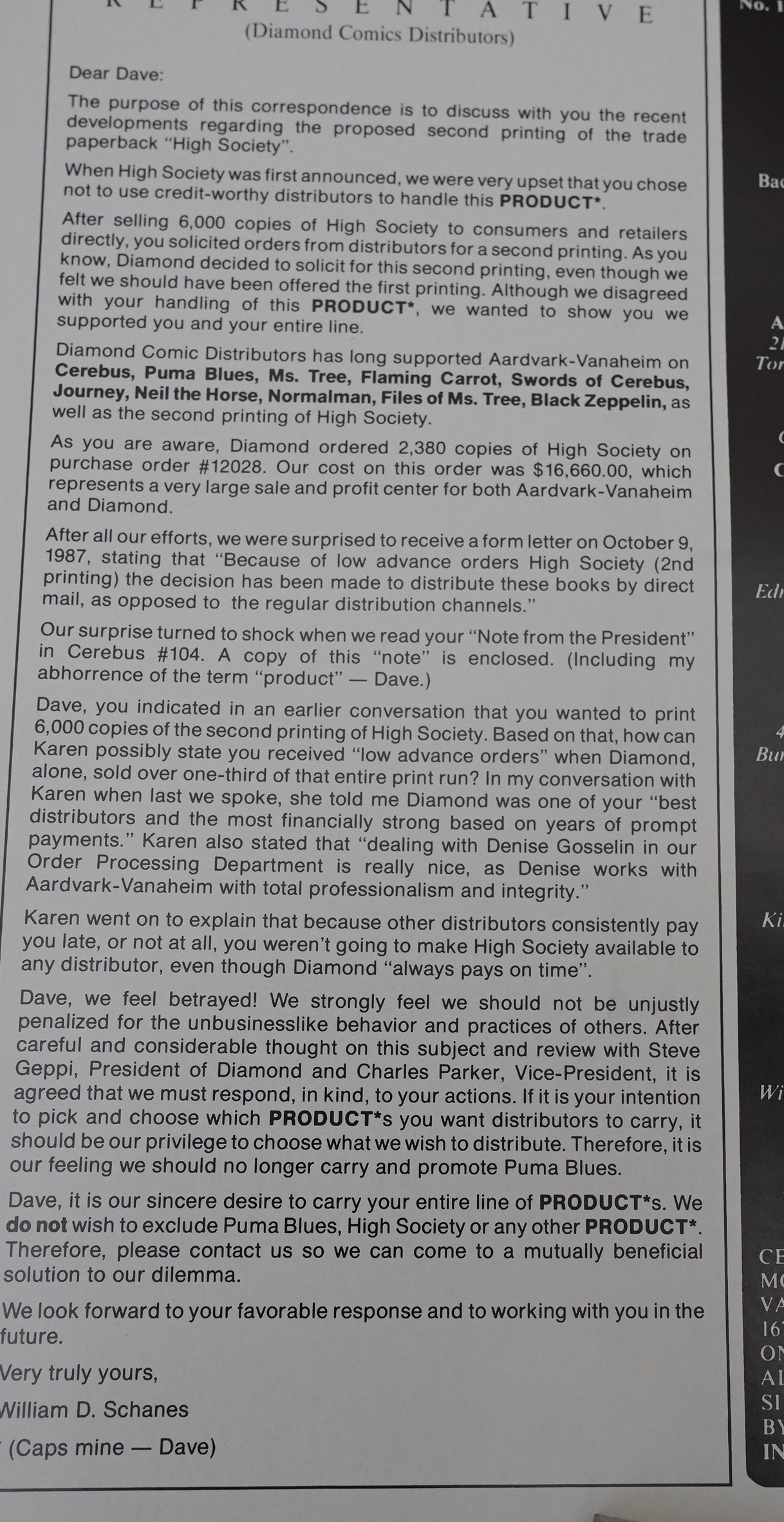
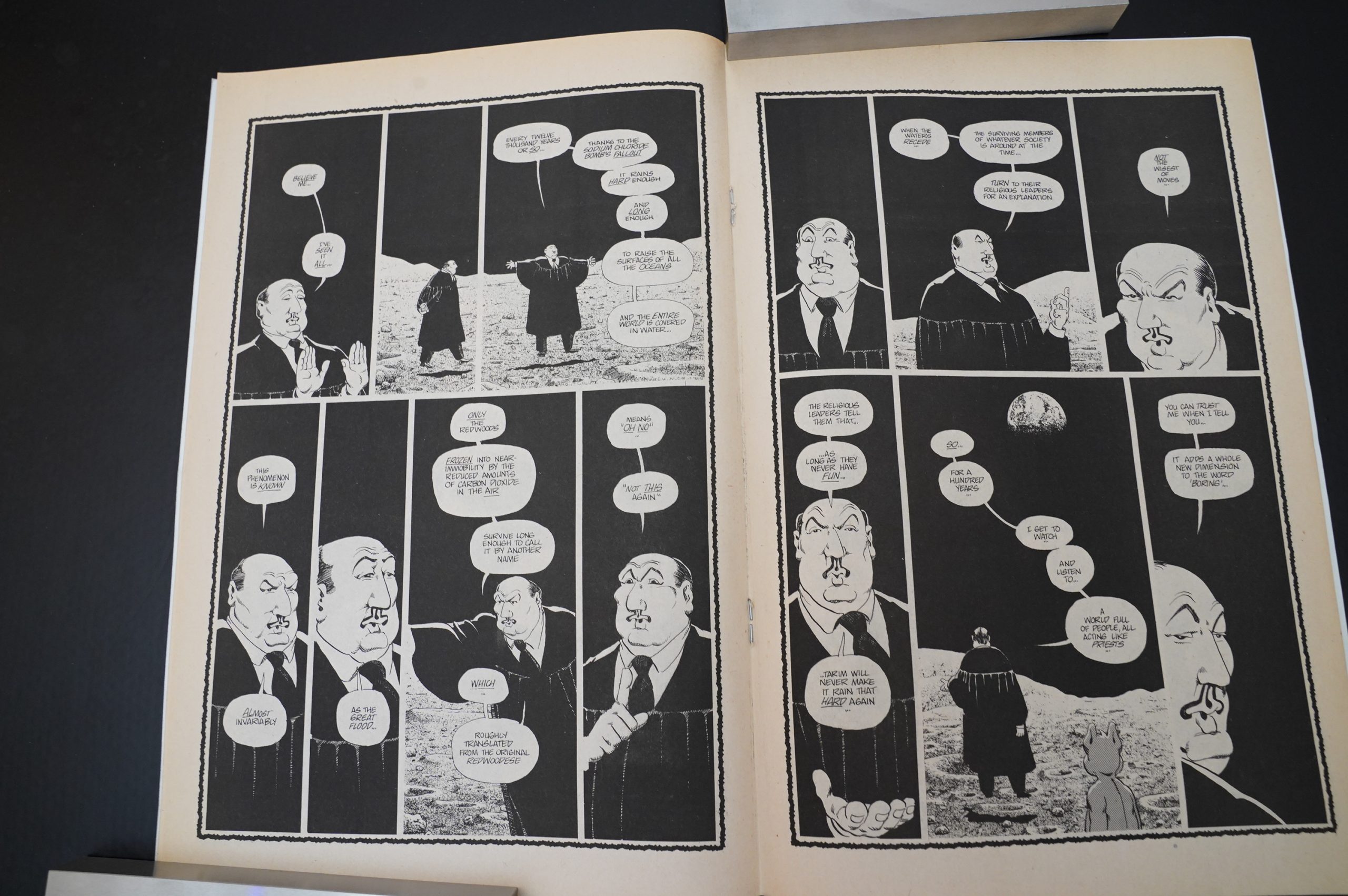
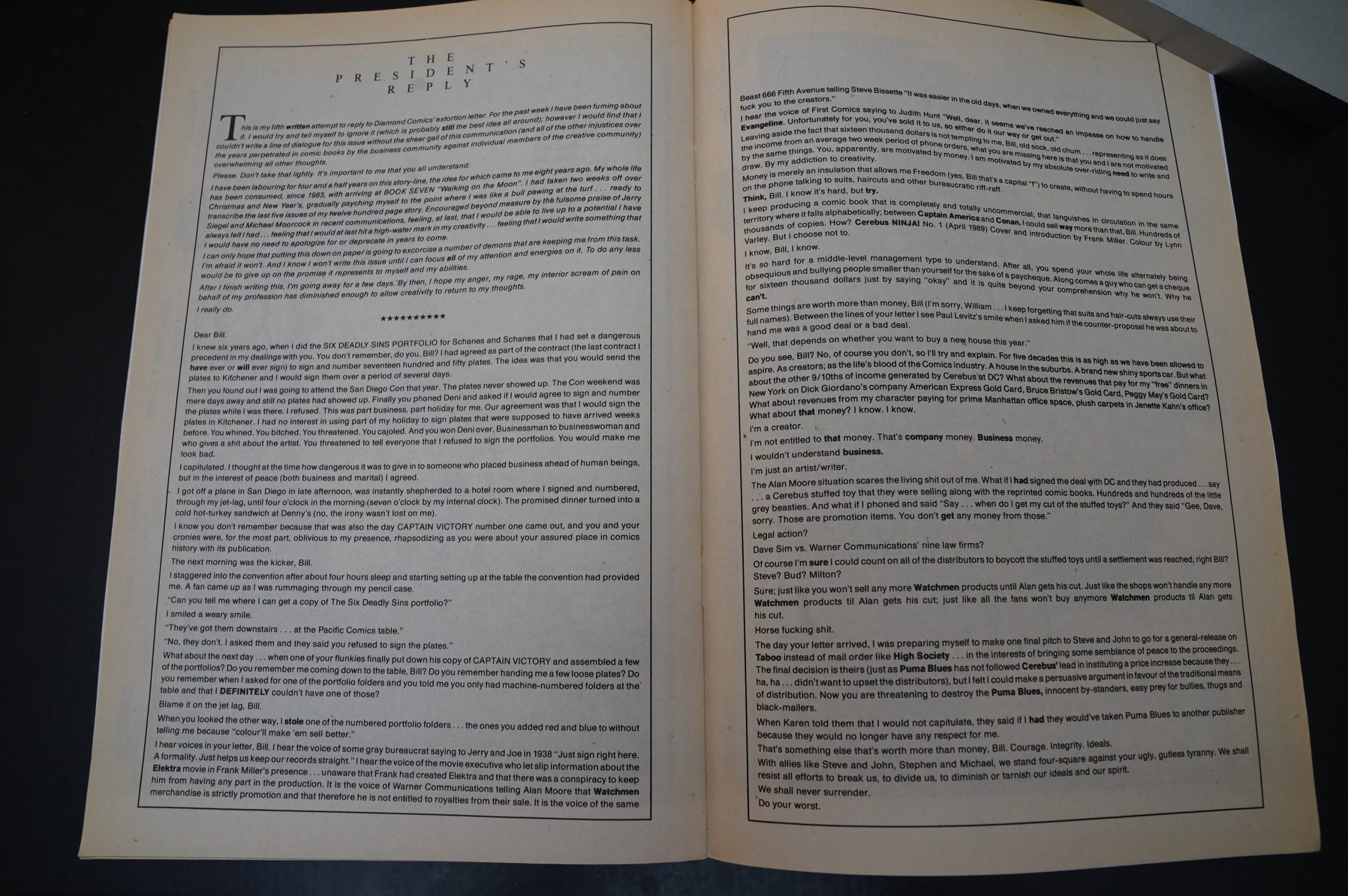
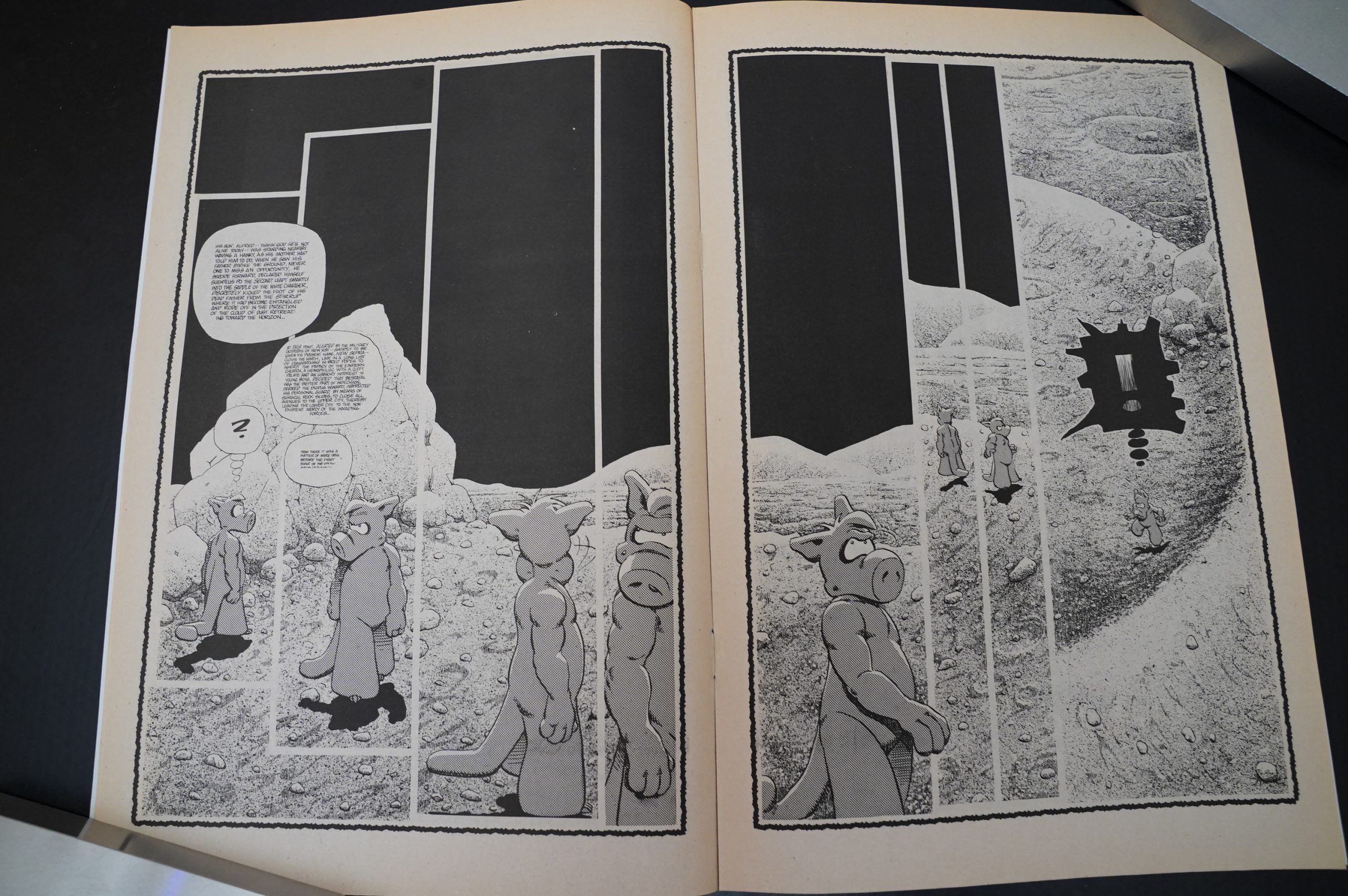
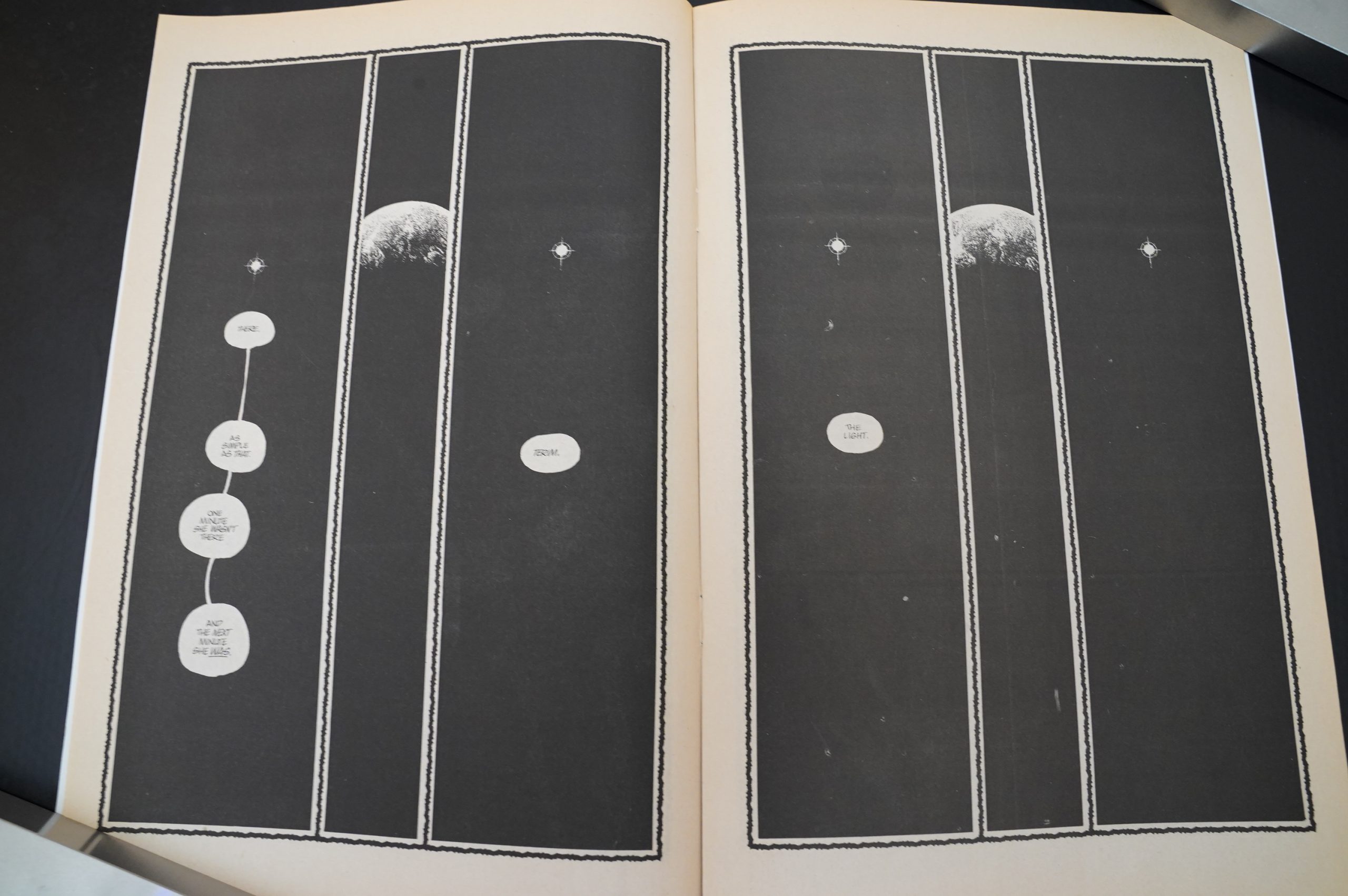
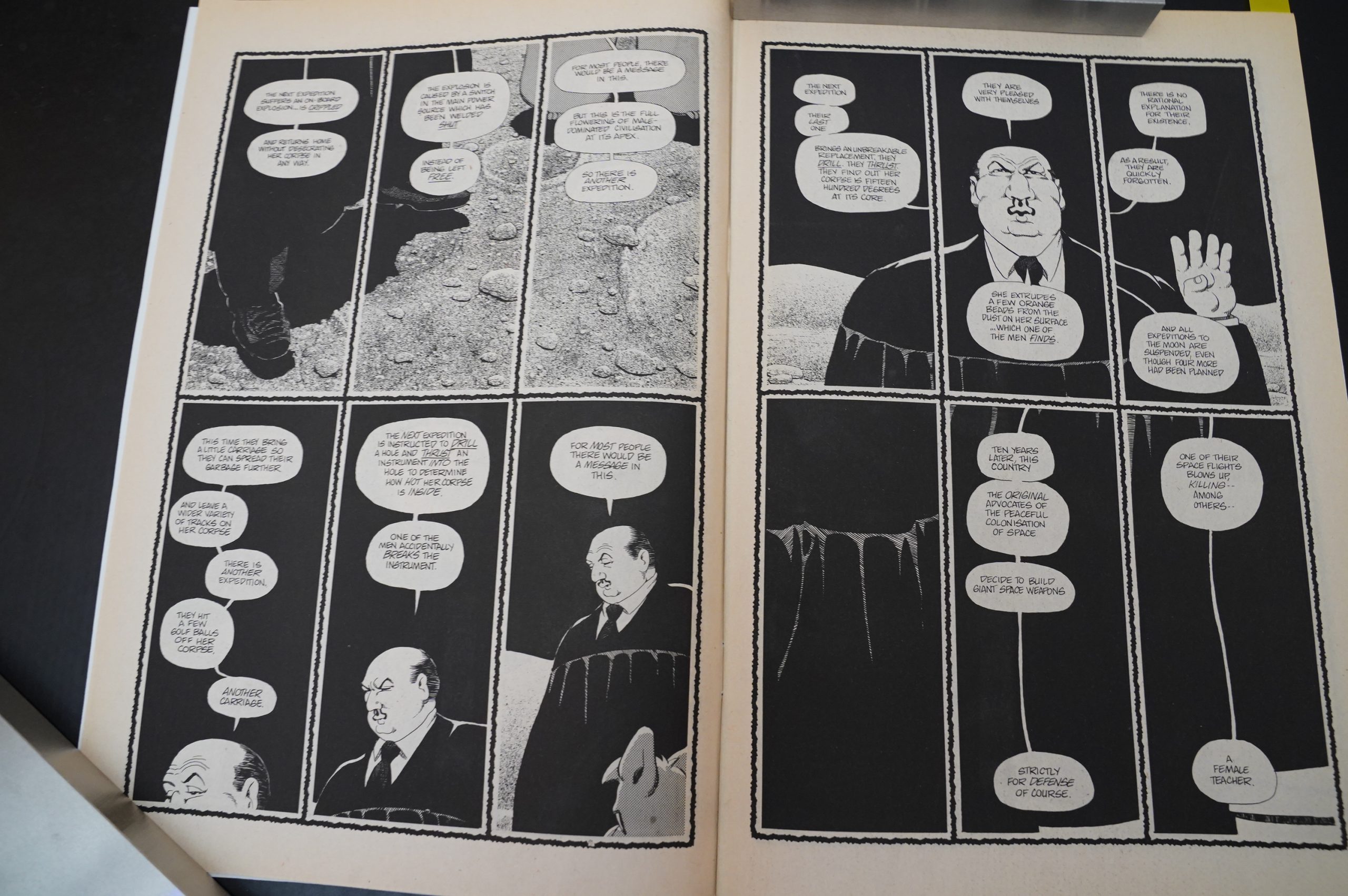
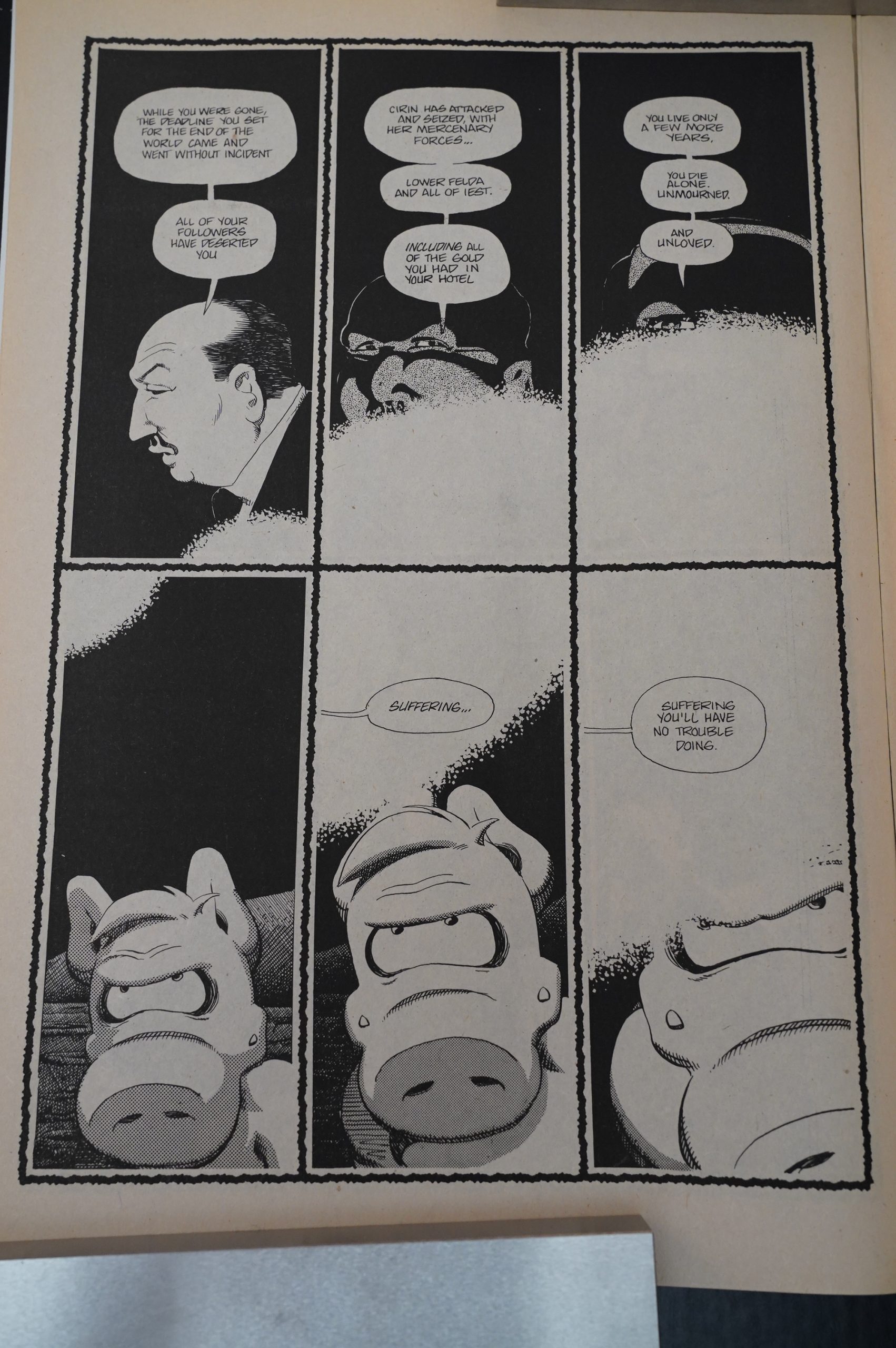
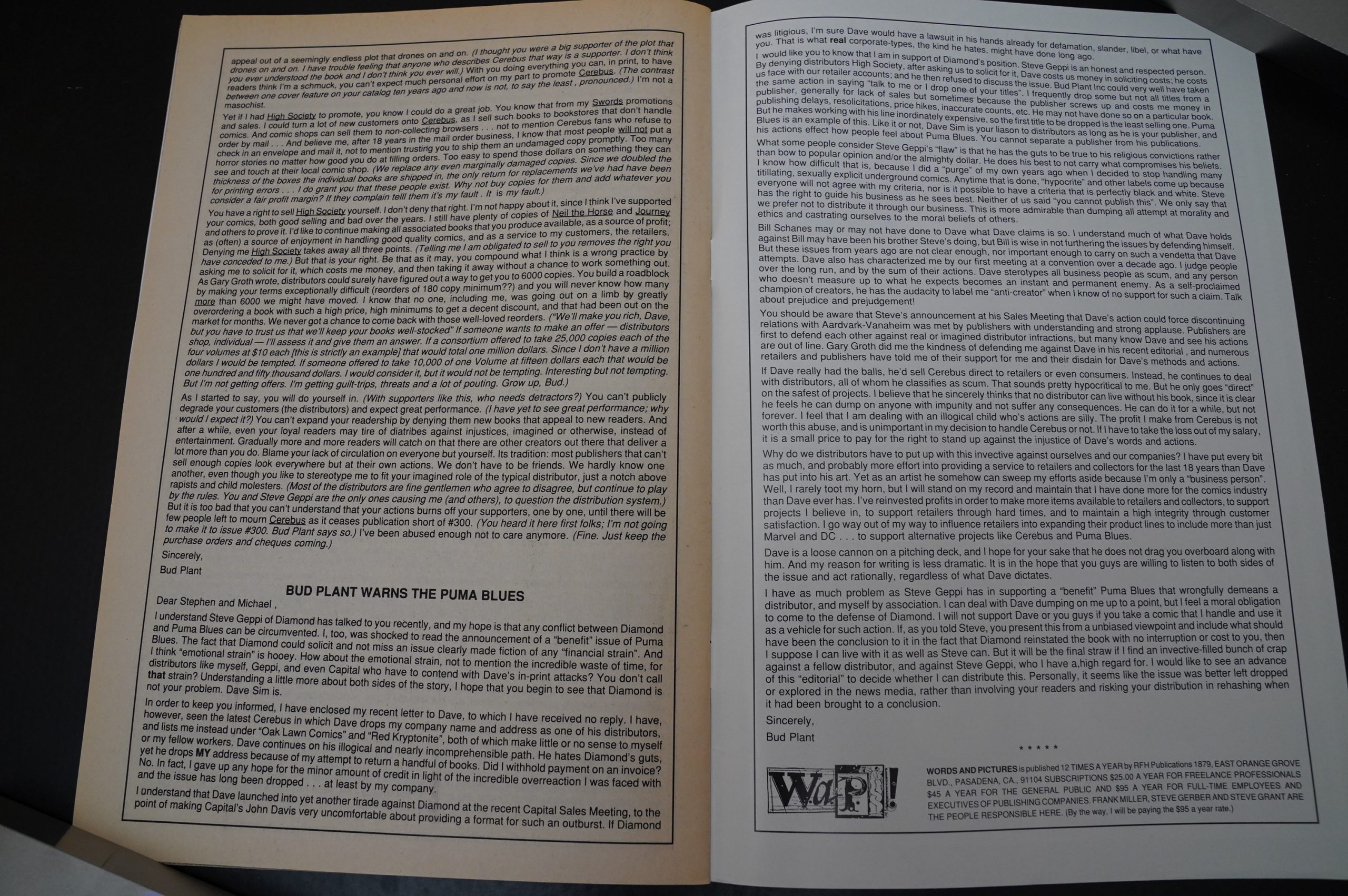
These read-thurs are absolutely brilliant. A great resource for any Cerebus fan.
*read-thrus. (I was led down nr asleep as I wrote this).